Project of 24 public housing units located in Platja d’En Bossa, south of Ibiza town, an urban environment mainly dedicated to exploiting mass tourism.
The building is located on a square plot of 43x43m, practically flat, about 5m above sea level and rotated 45º with respect to the cardinal axes.
Based on the tradition of domestic architecture in warm climates -with inevitable references such as the classical domus, the Islamic house or the traditional Ibizan architecture- the location of the building aims at achieving a certain autonomy with respect to its immediate surroundings by defining an isolated, four-storey volume, which practically reaches the maximum occupancy and buildability of the plot. The four courtyards around which organizes the building play an essential role in the comfort of the dwellings and exponentially increase its form factor so that all living rooms and bedrooms have double orientation.
08014 Platja de’n Bossa. 24 houses
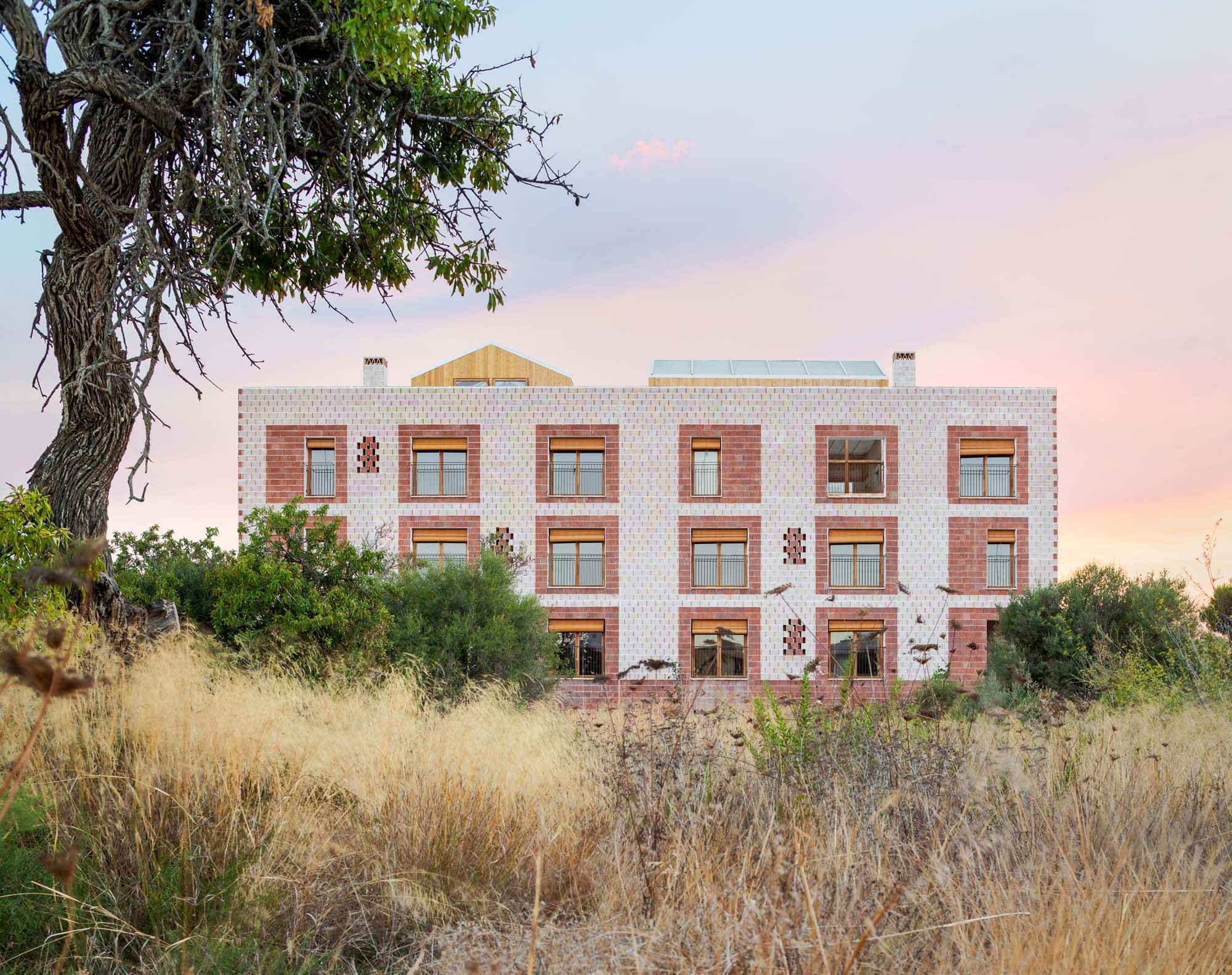

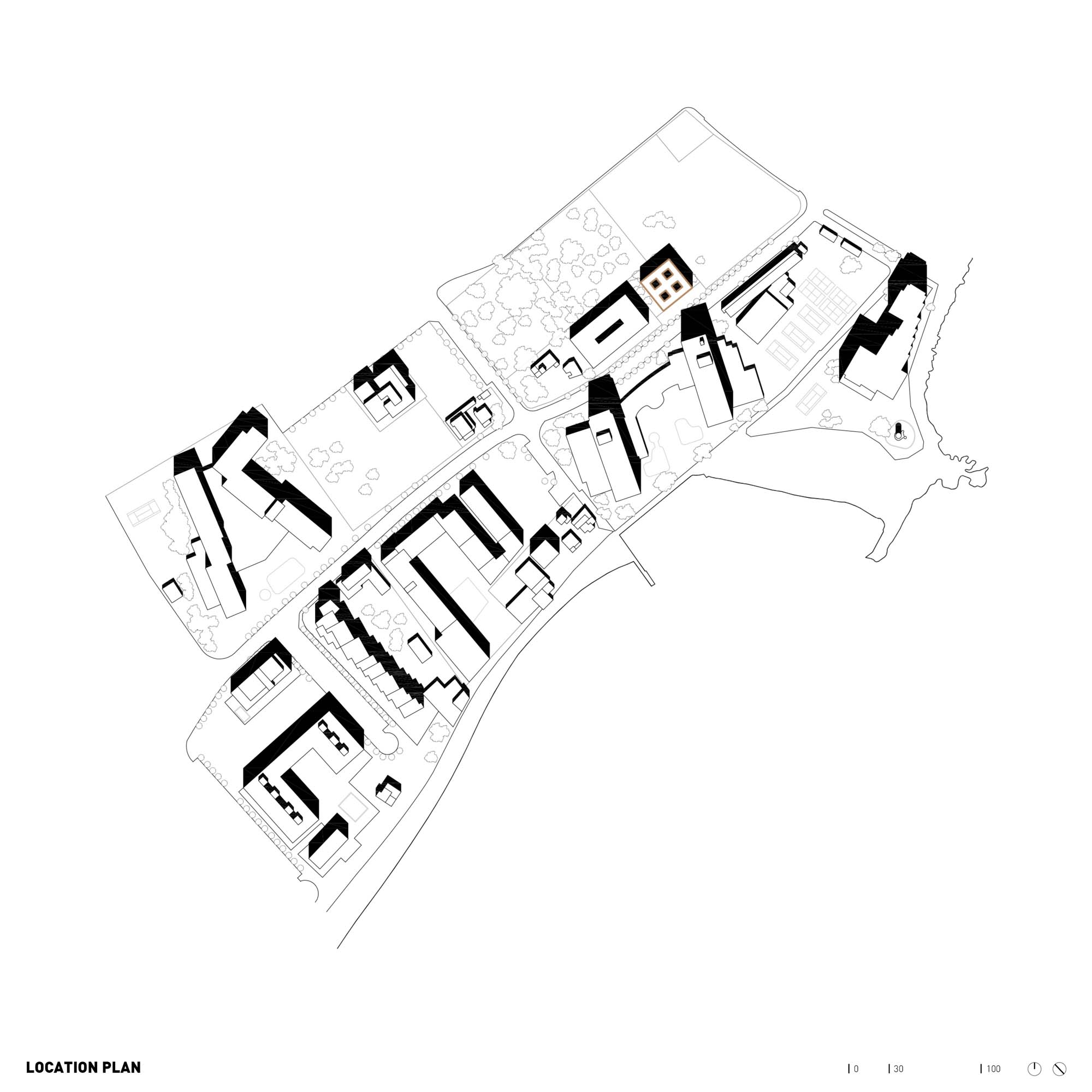

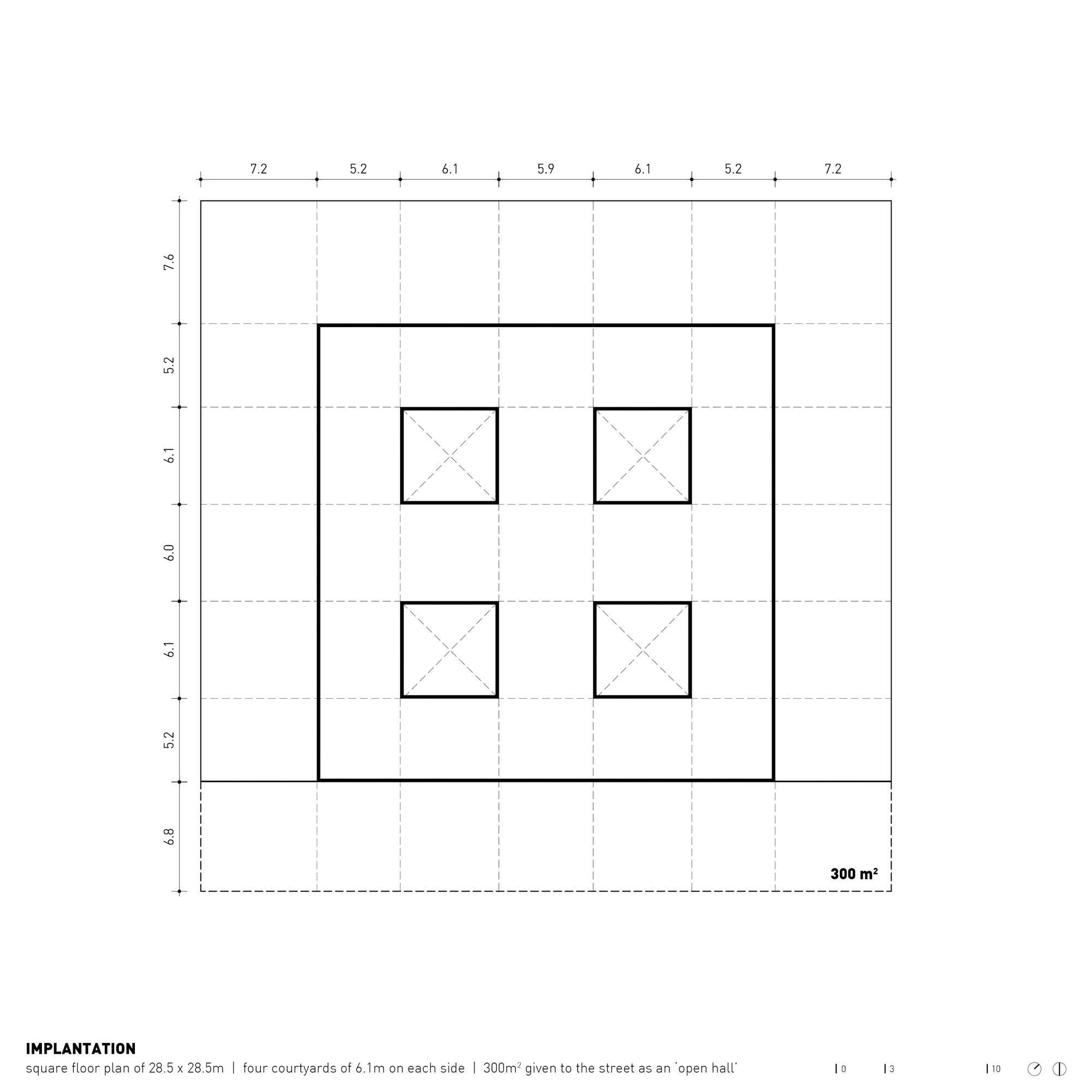
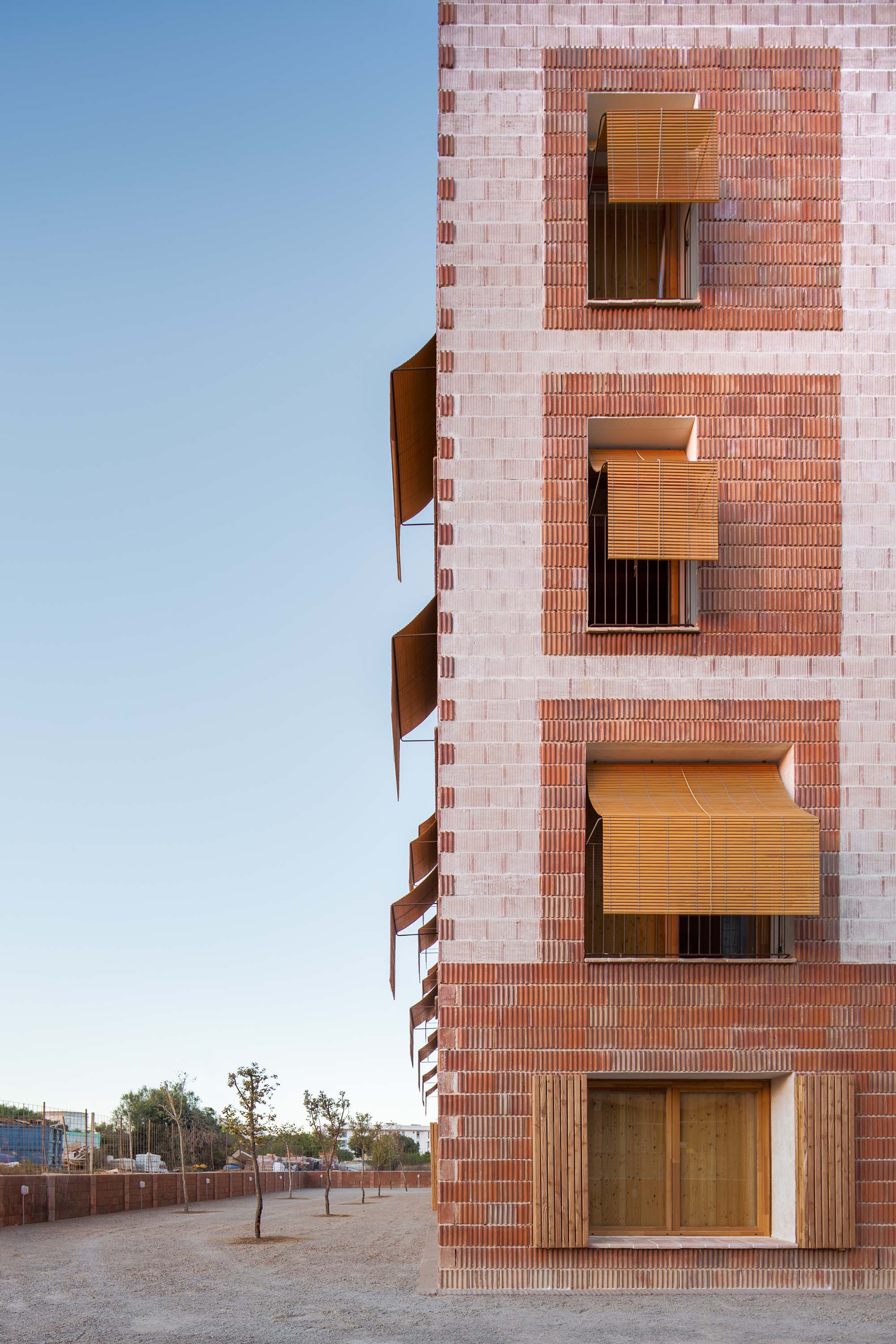


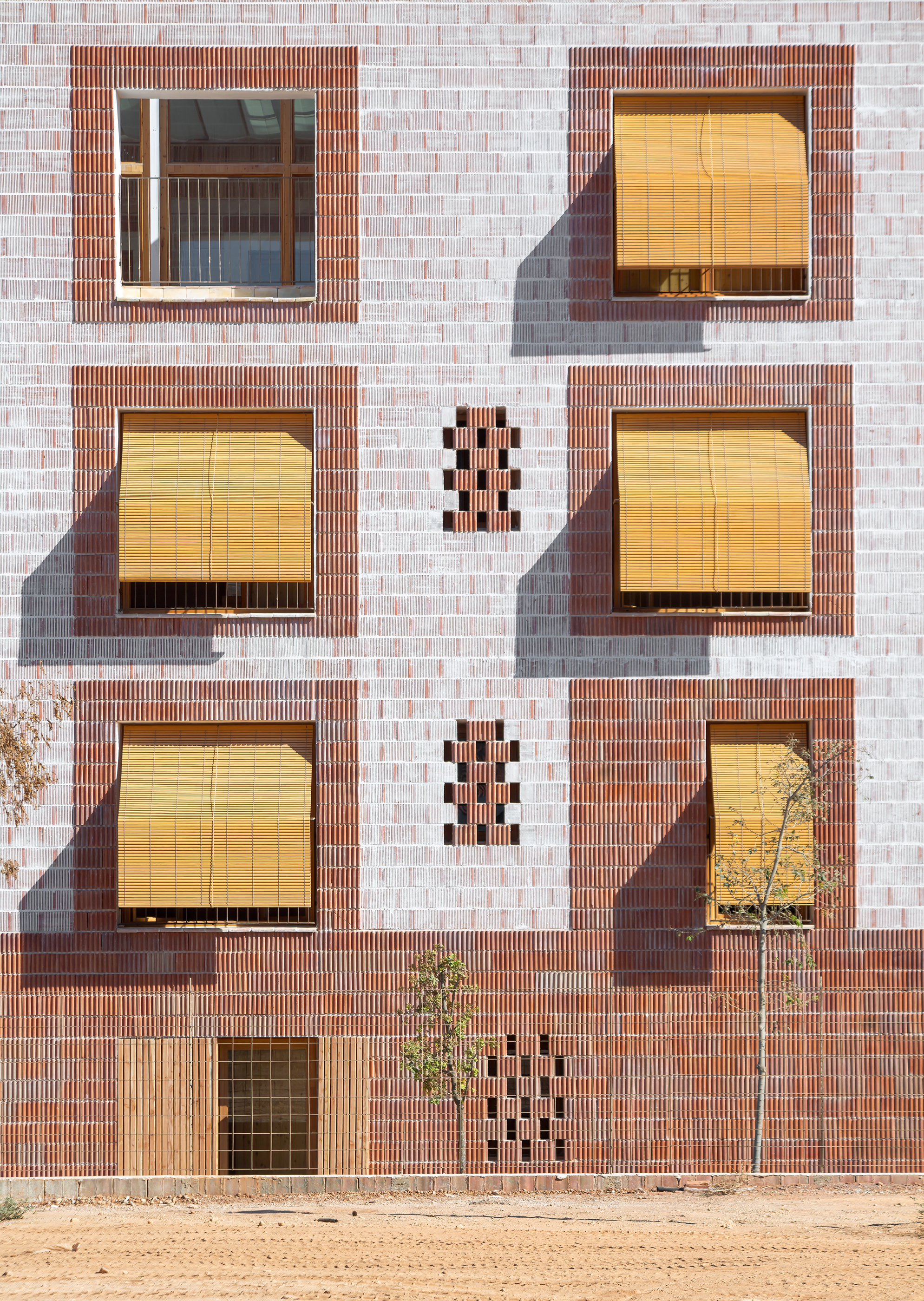
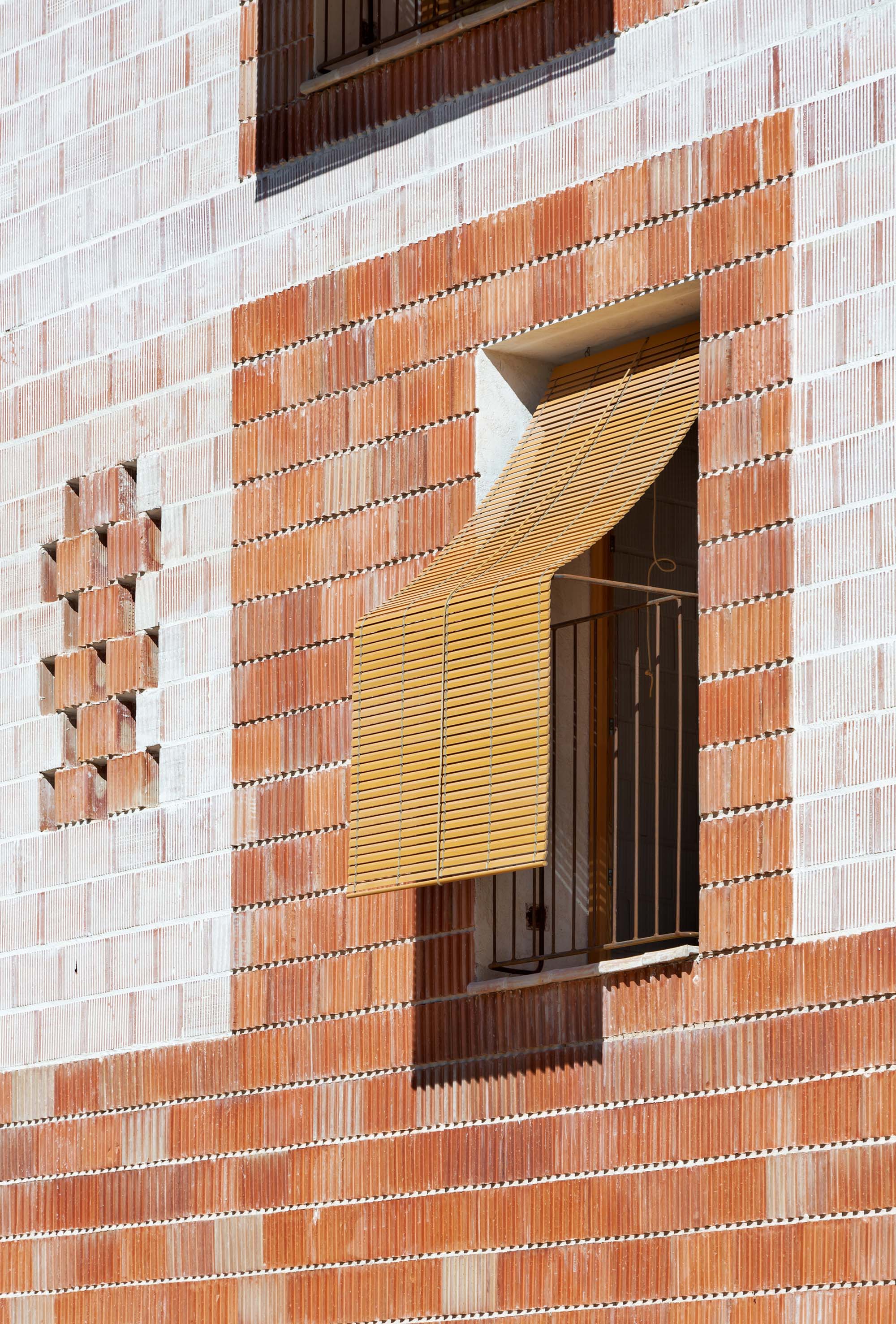

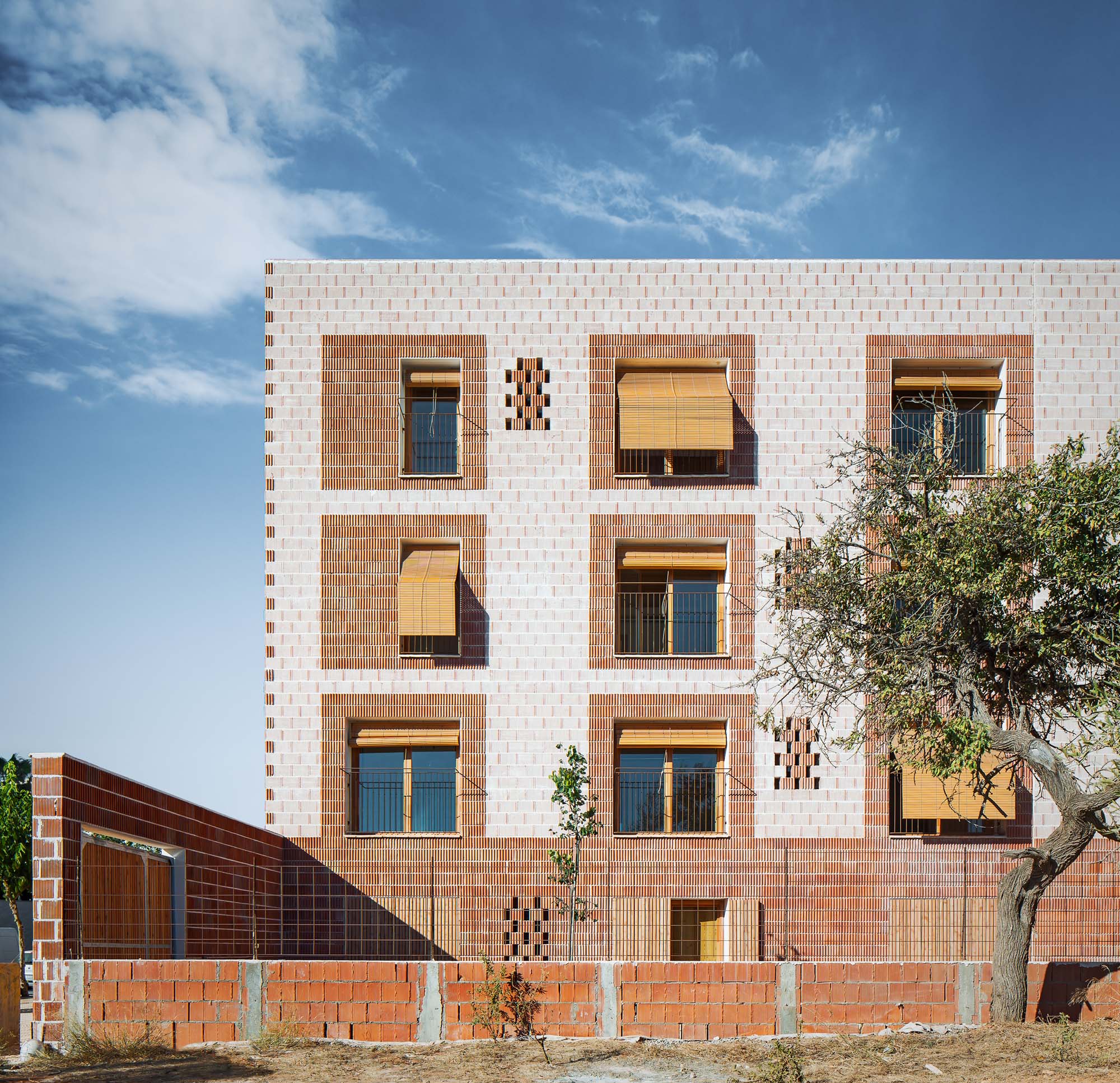
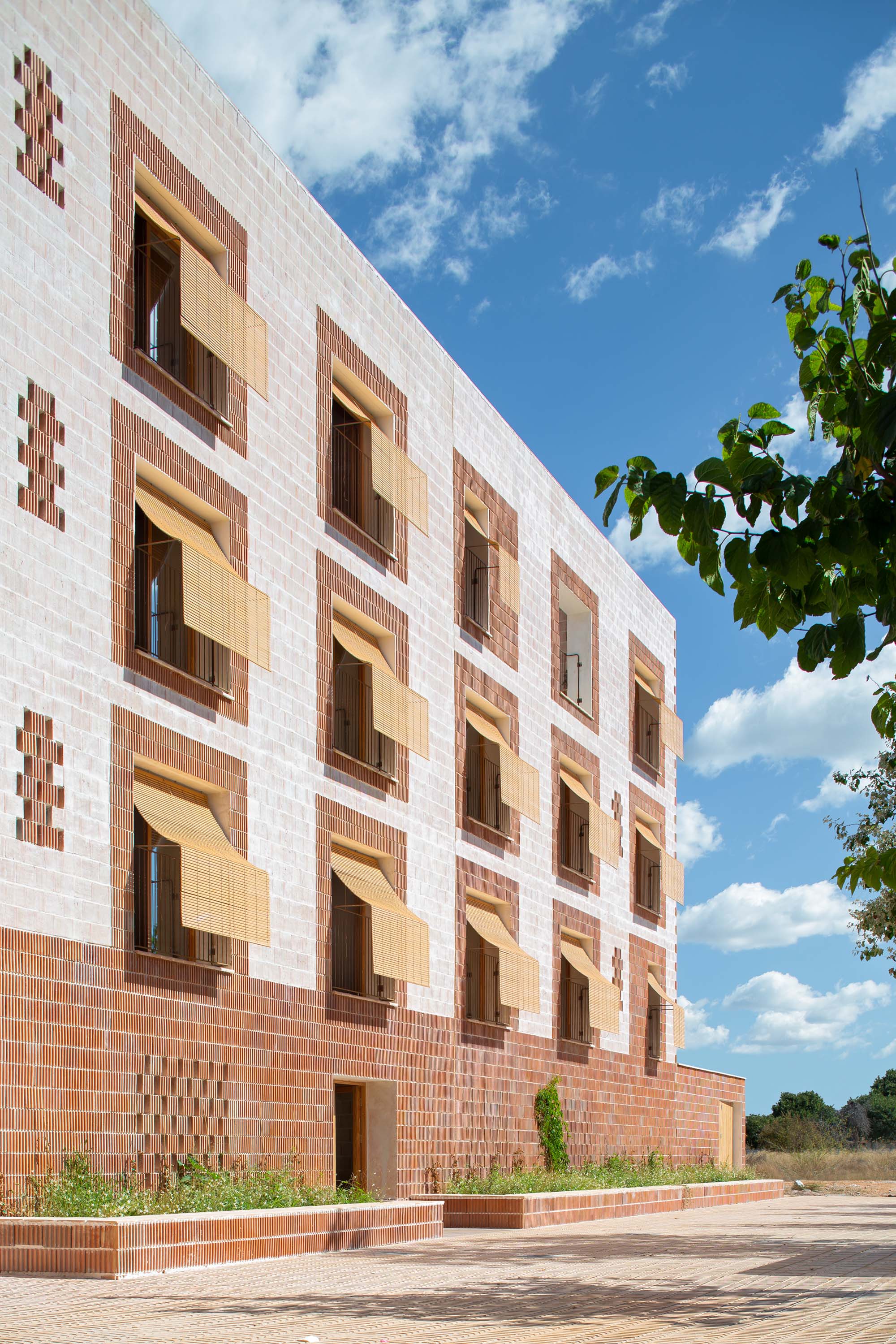


The structure of the building is solved with load-bearing walls that form a mesh of spaces of approximately square proportion, establishing a correspondence between the structural and the spatial systems of the project. These spaces are organized in two concentric strips -the exterior one with the living rooms, bedrooms and bathrooms and the interior one with the kitchens and the four courtyards- that surround the center of gravity of the building, where the circulation core is located, giving access to eight apartments per floor.
The eight dwellings, four one-bedroom and four two-bedroom, ’embrace’ the courtyards in pairs so that each has two facades facing the courtyard. This layout defines a way of inhabiting that intimately ties the interior spaces to the exterior and semi-exterior ones. In addition, this implies a long interior development of the dwellings with the emergence of transition spaces always open to the courtyards, whose generous dimensions enable them as multipurpose spaces beyond their mere transitional role.
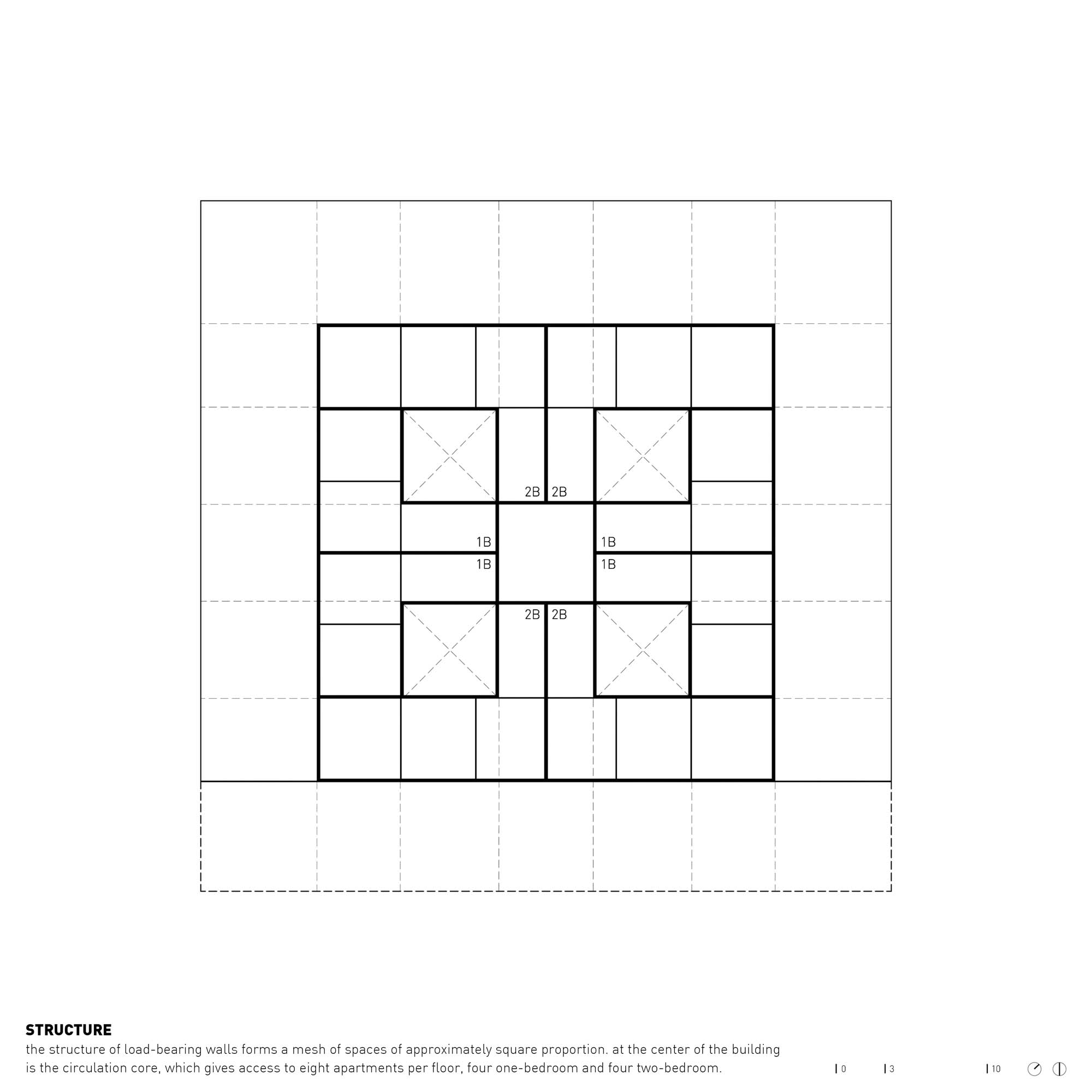
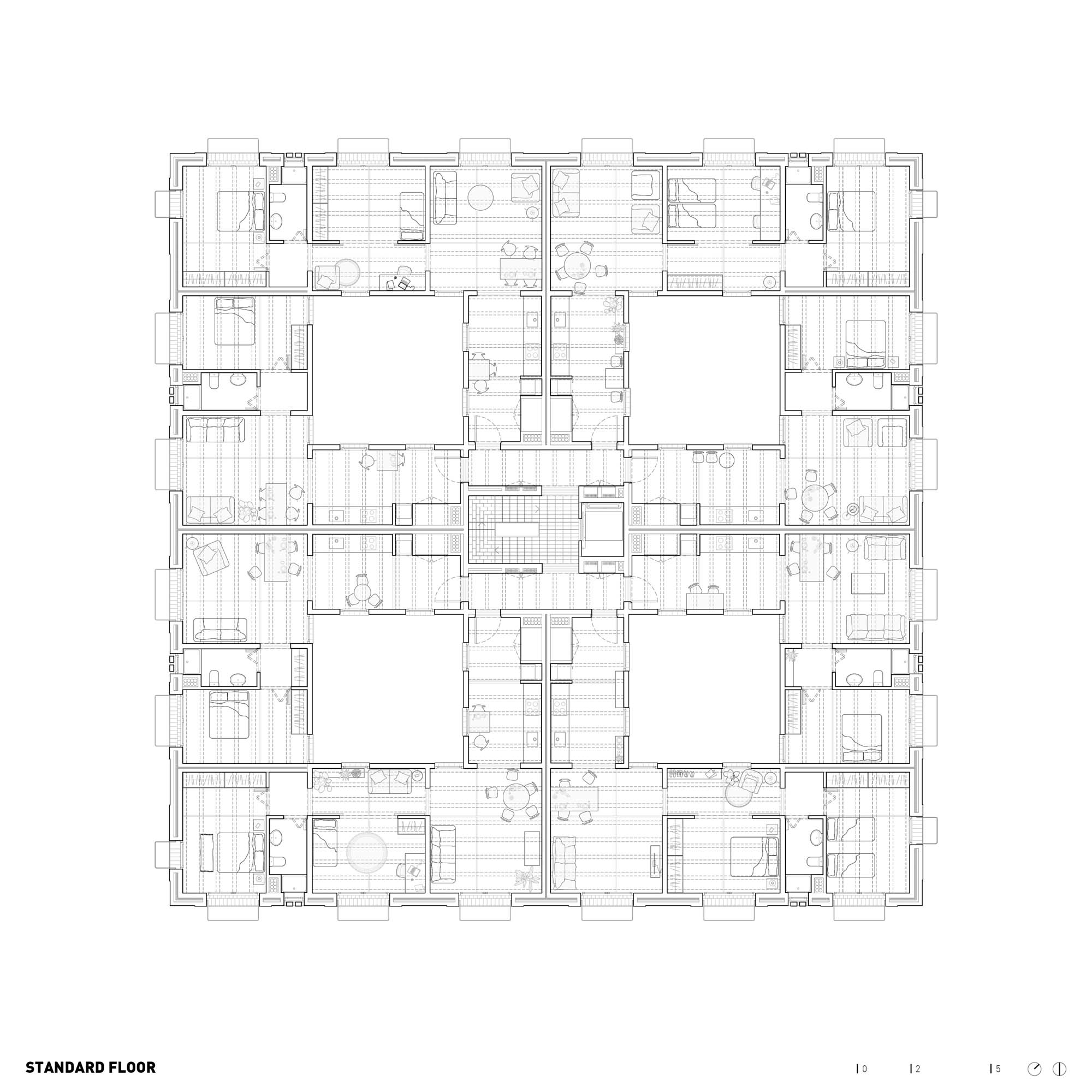
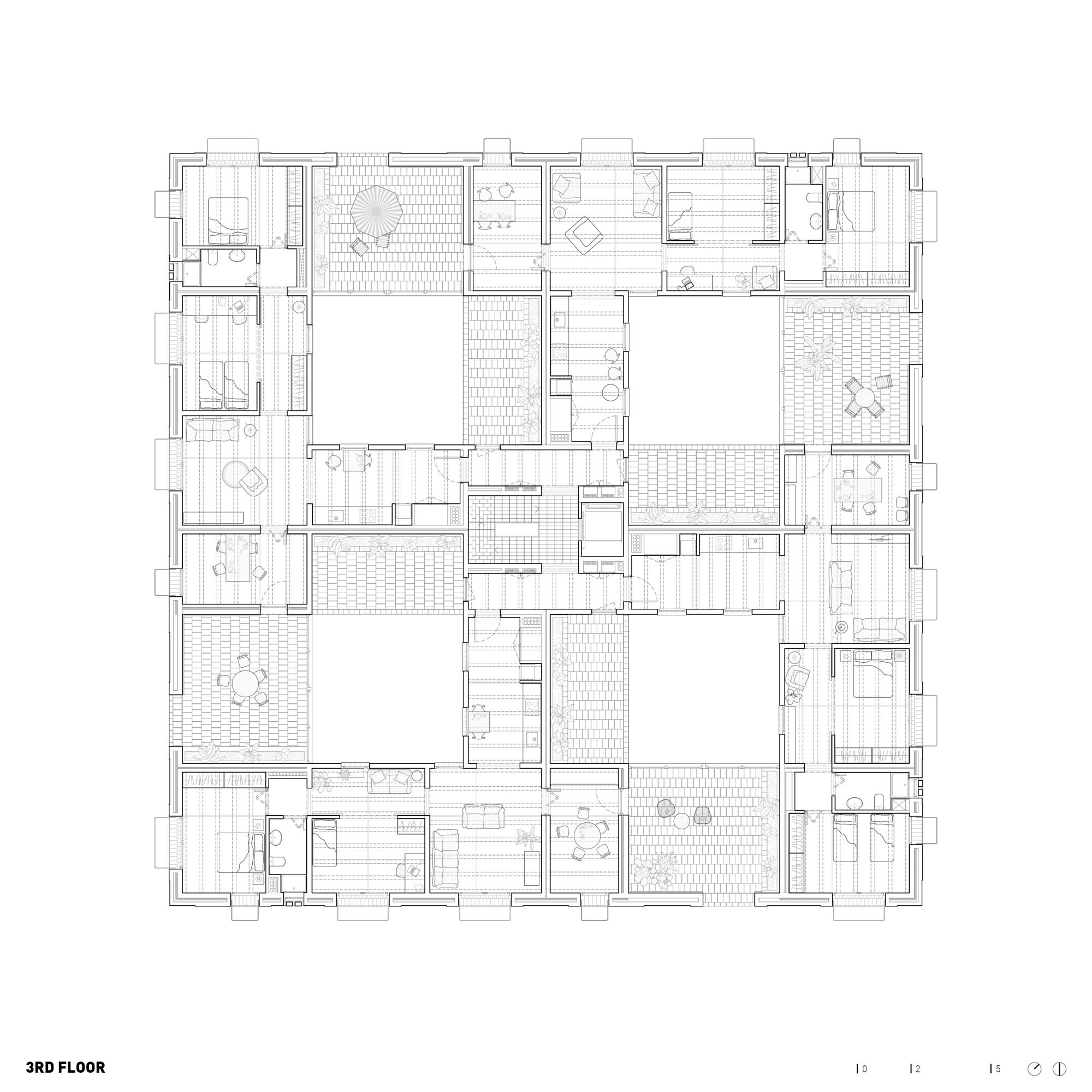

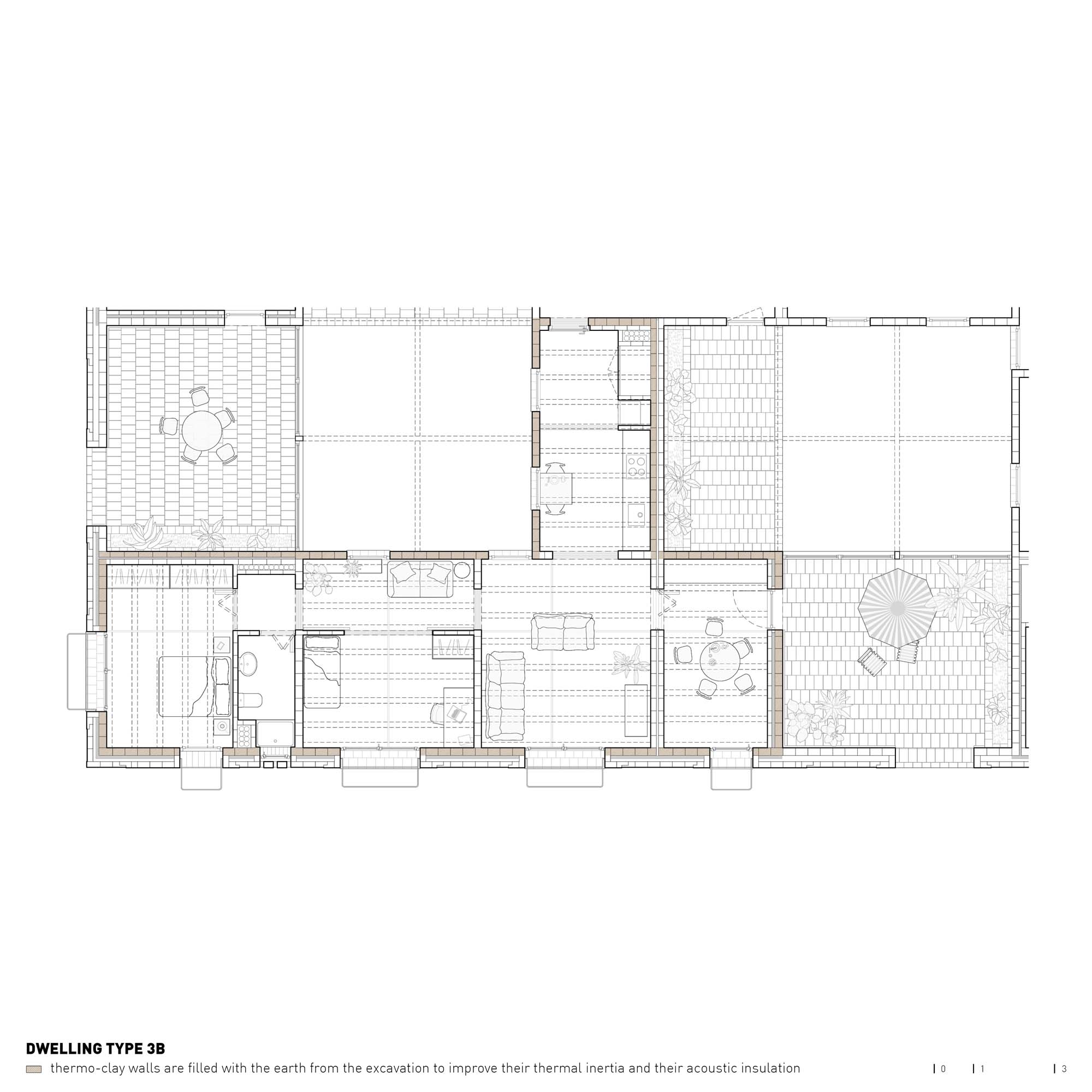
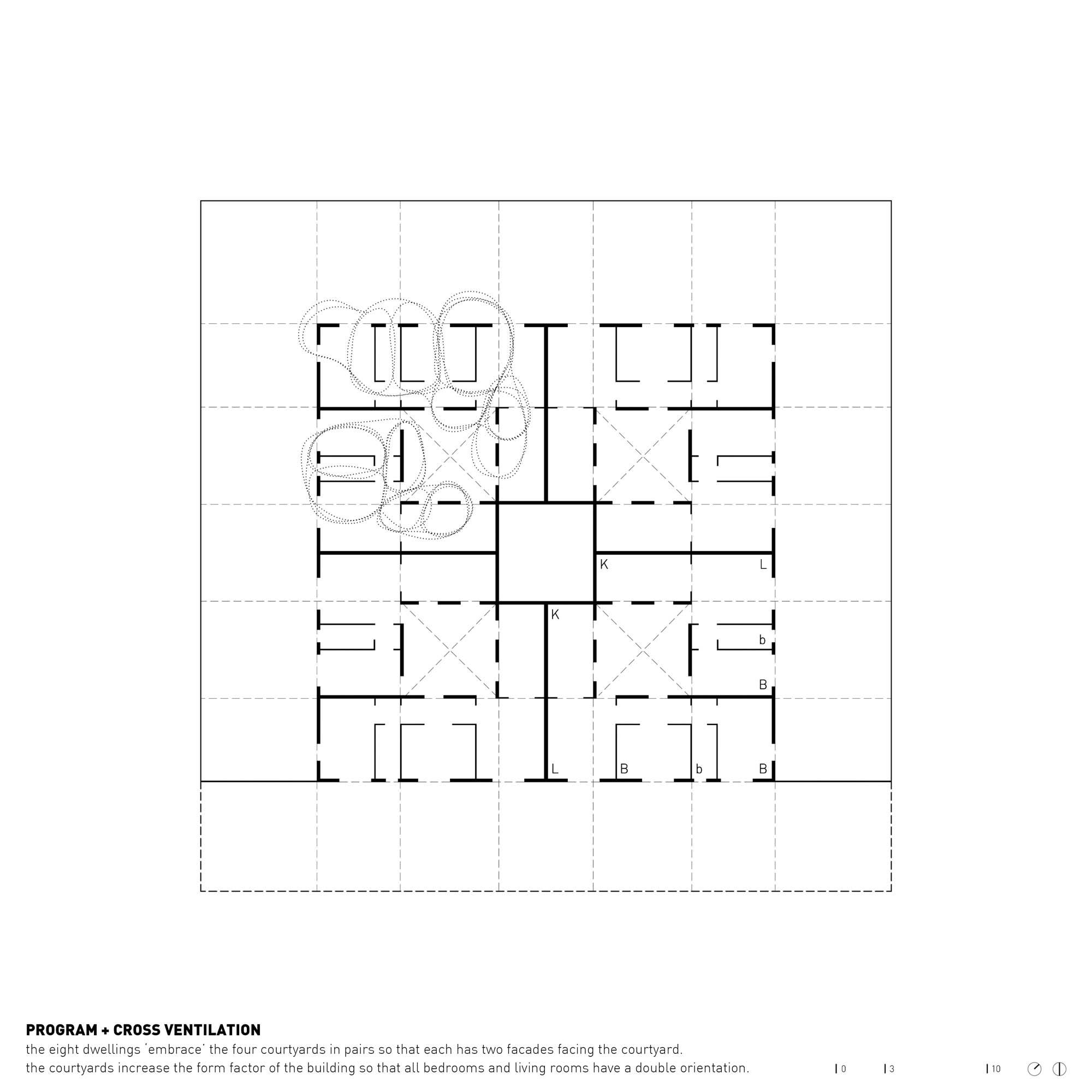
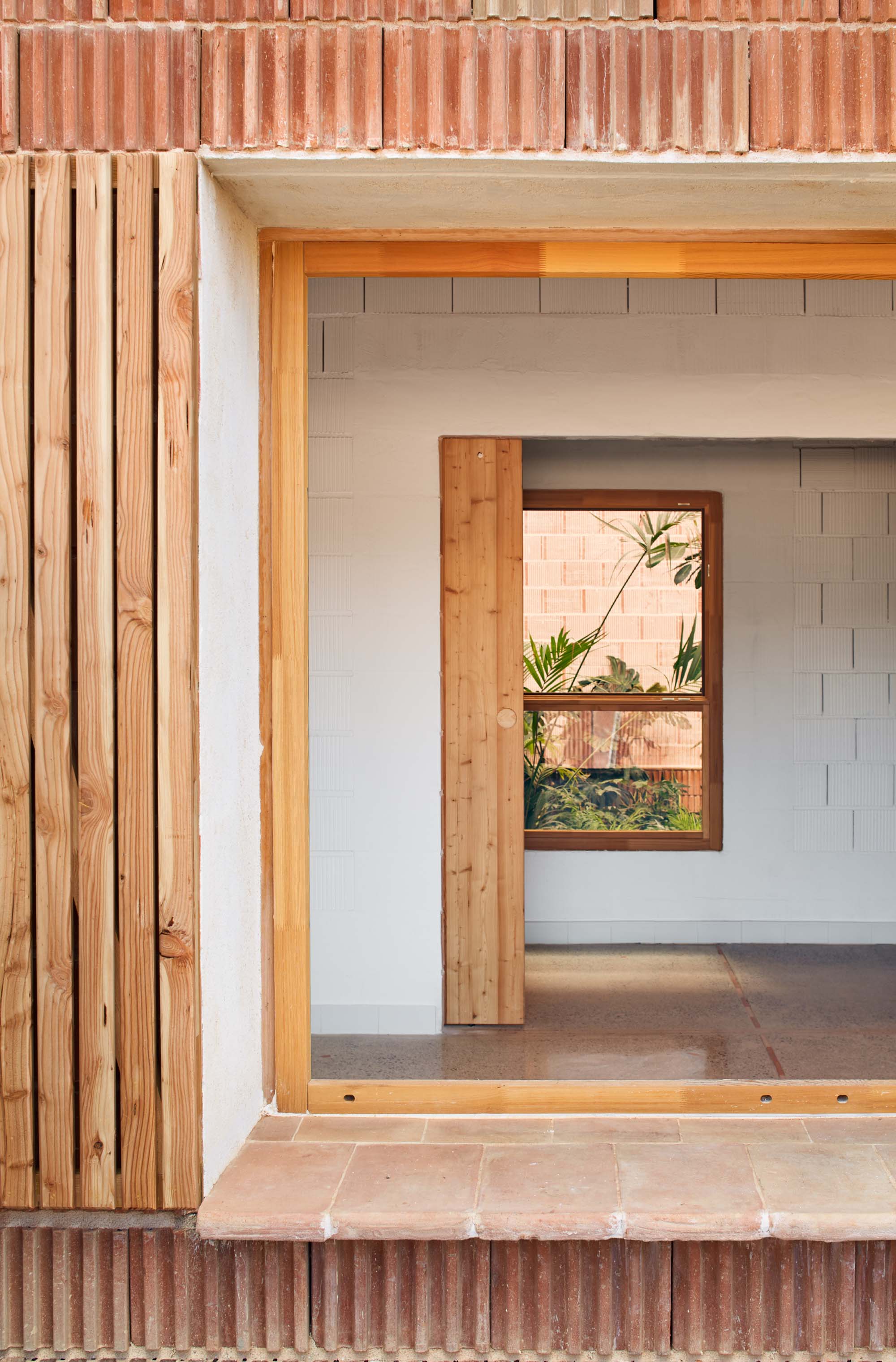

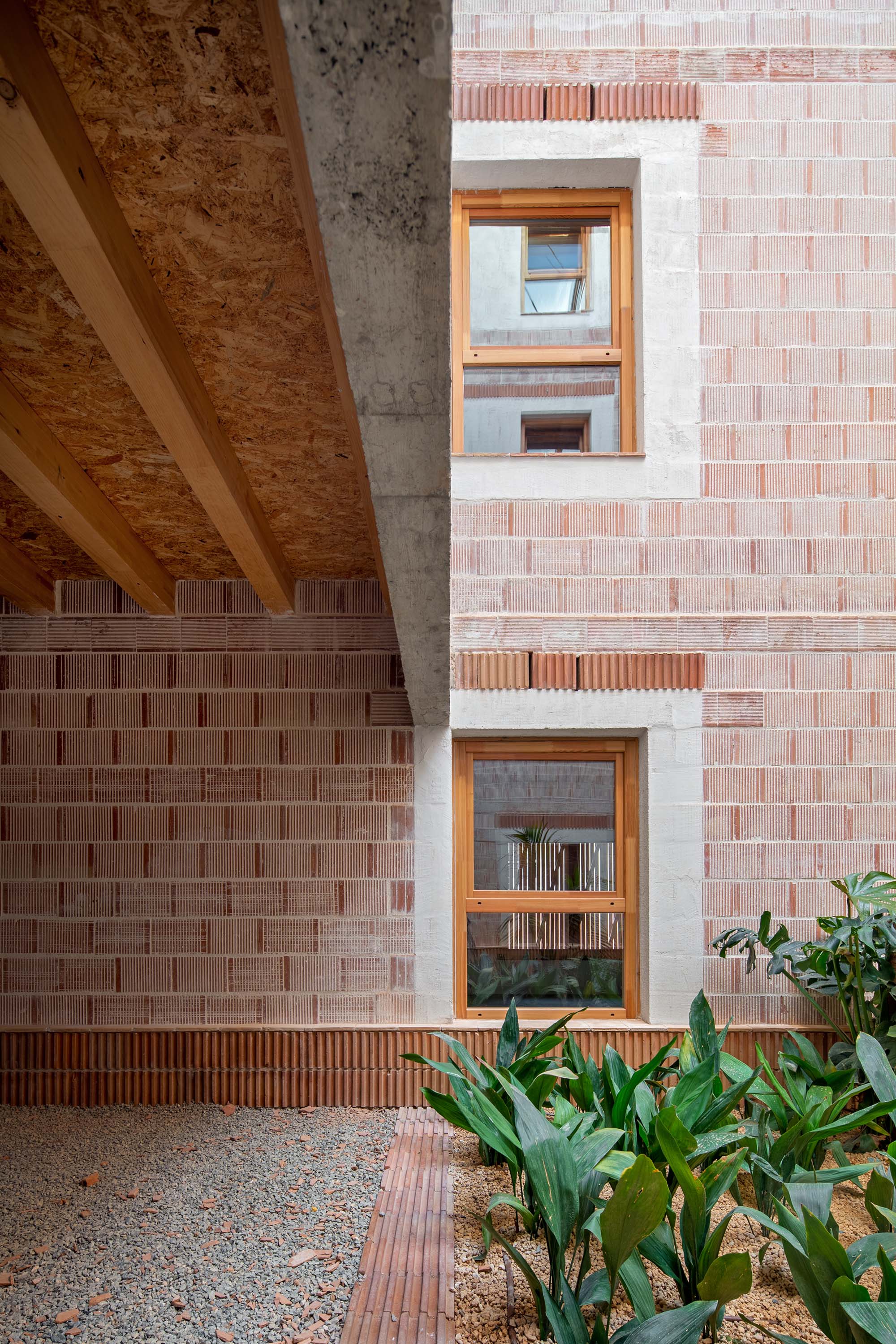


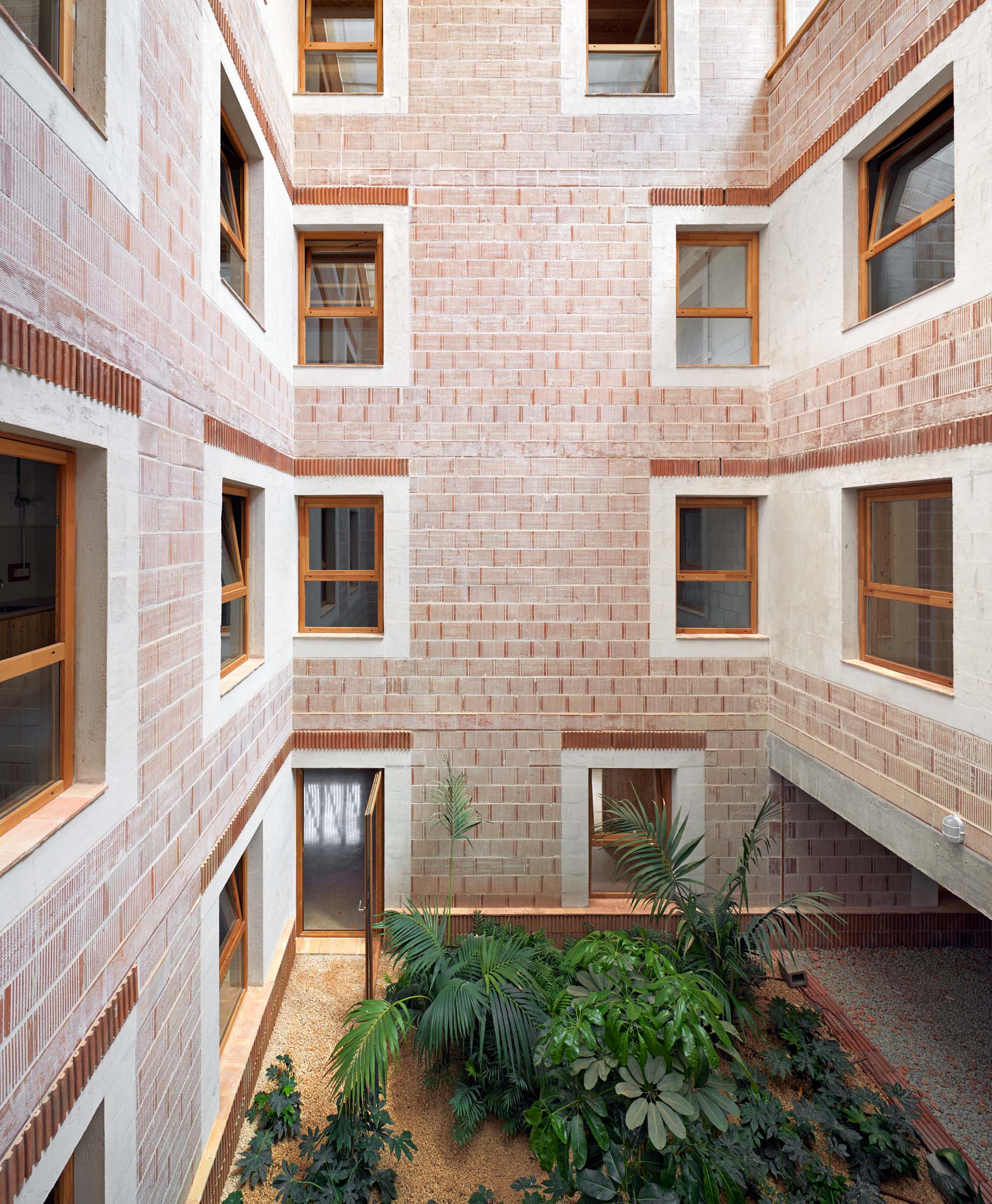
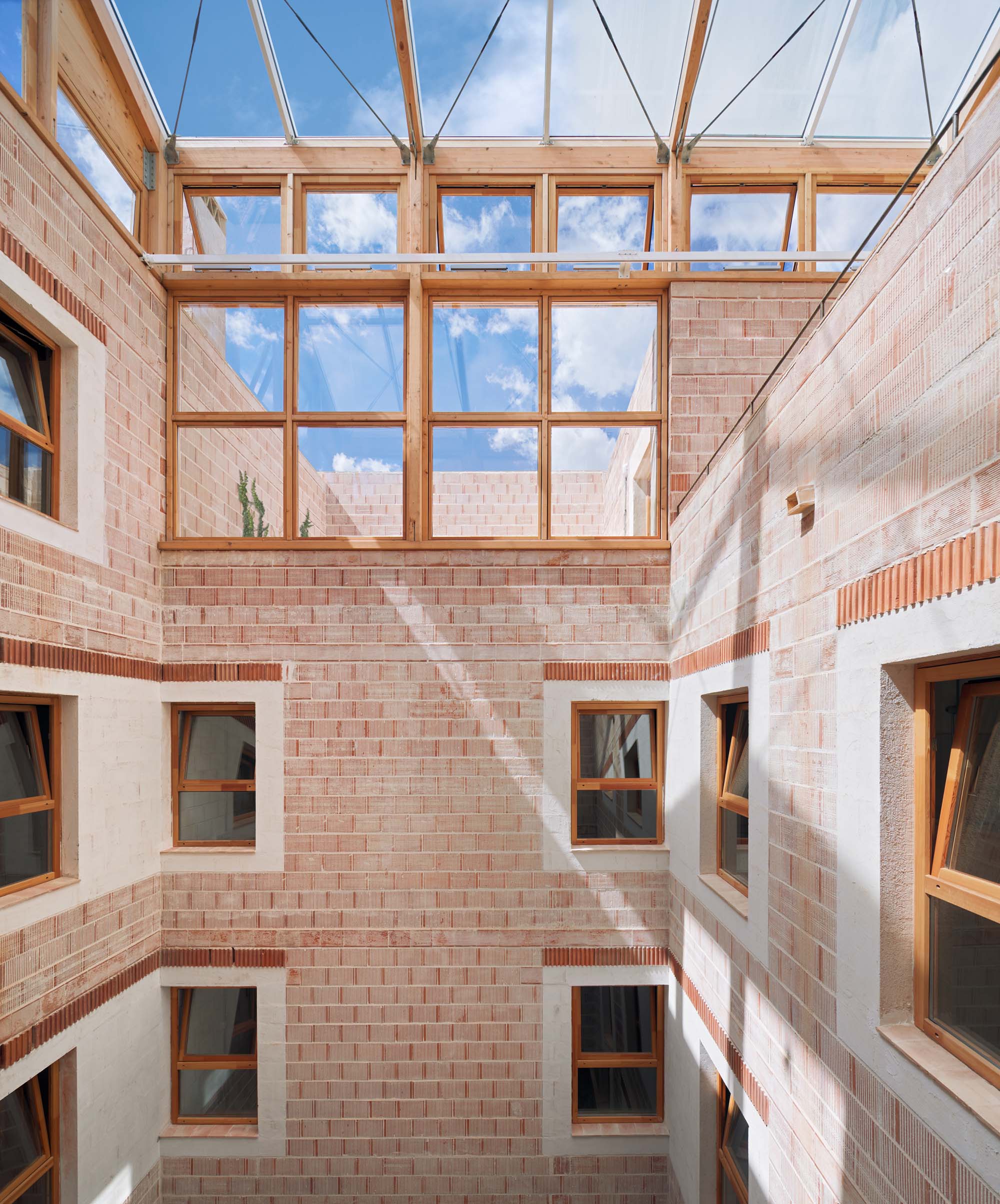
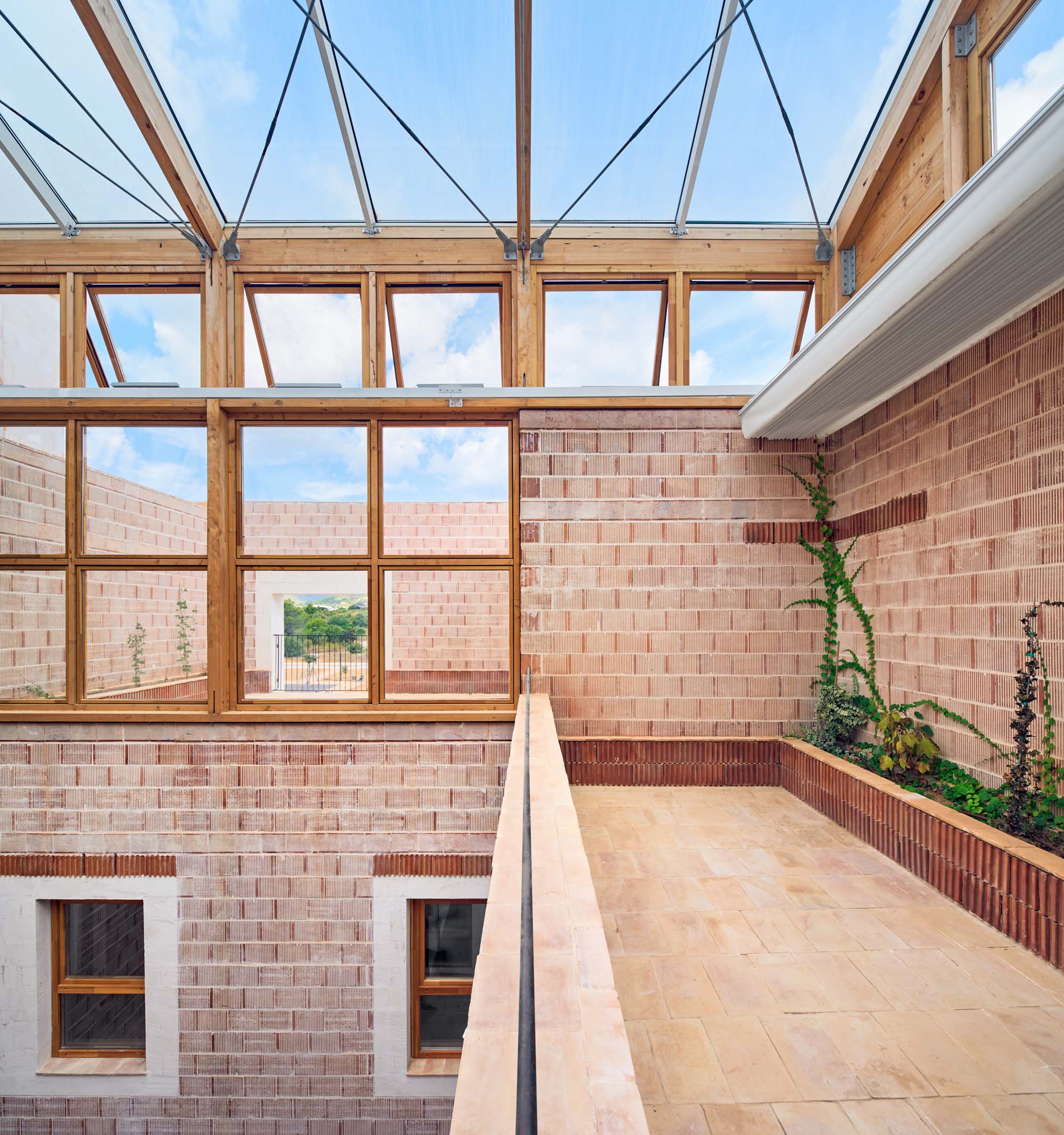
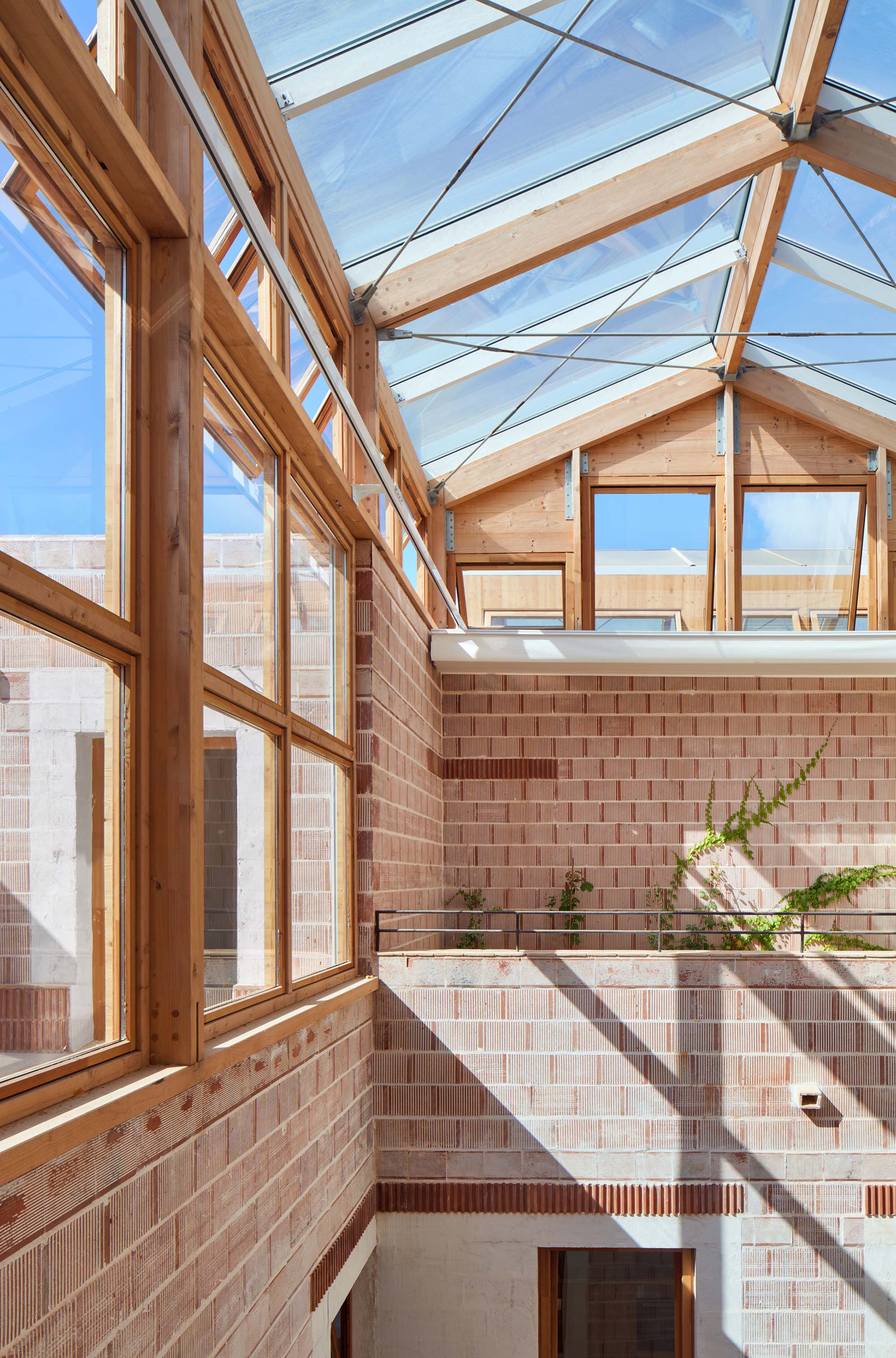
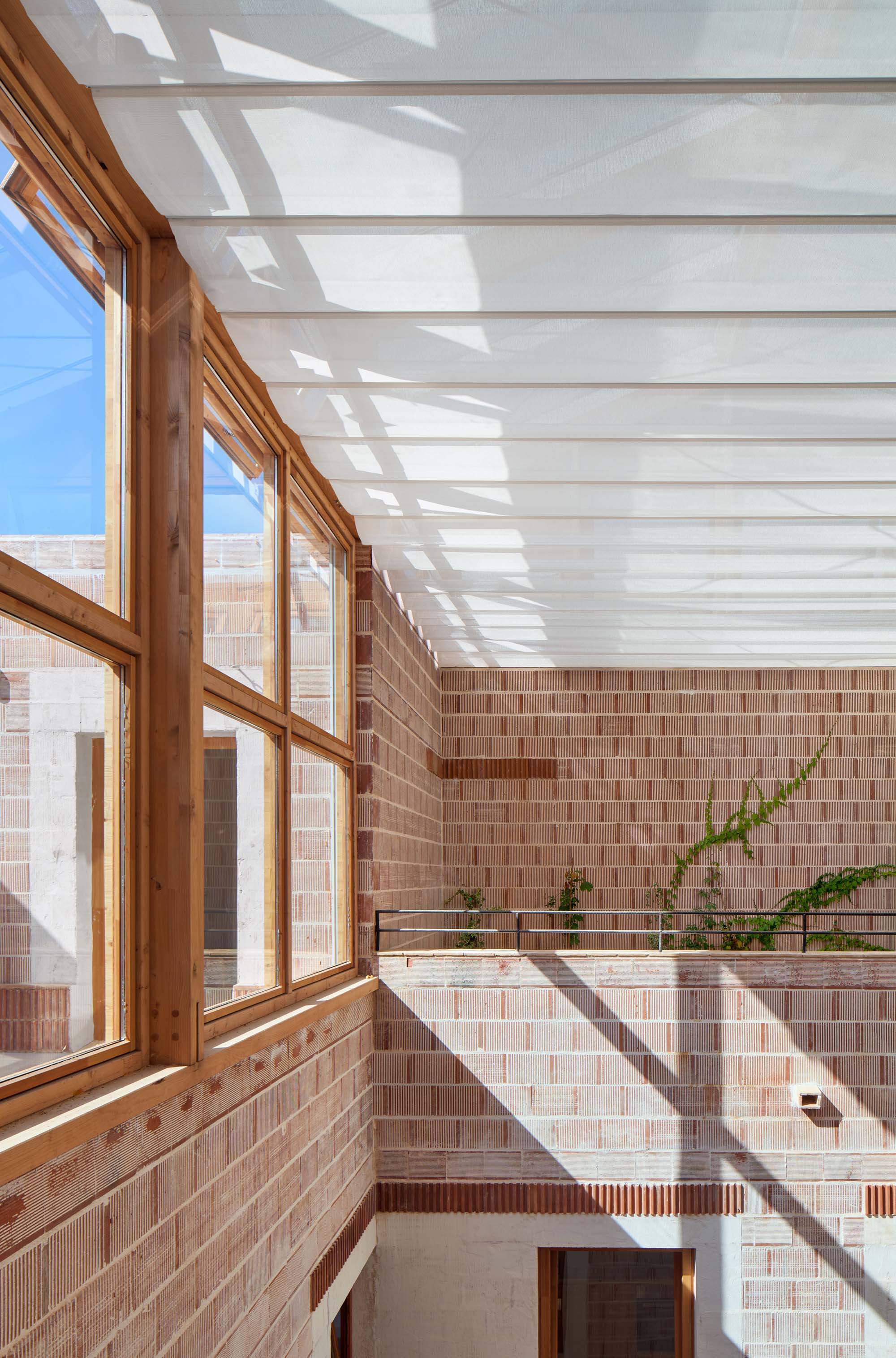
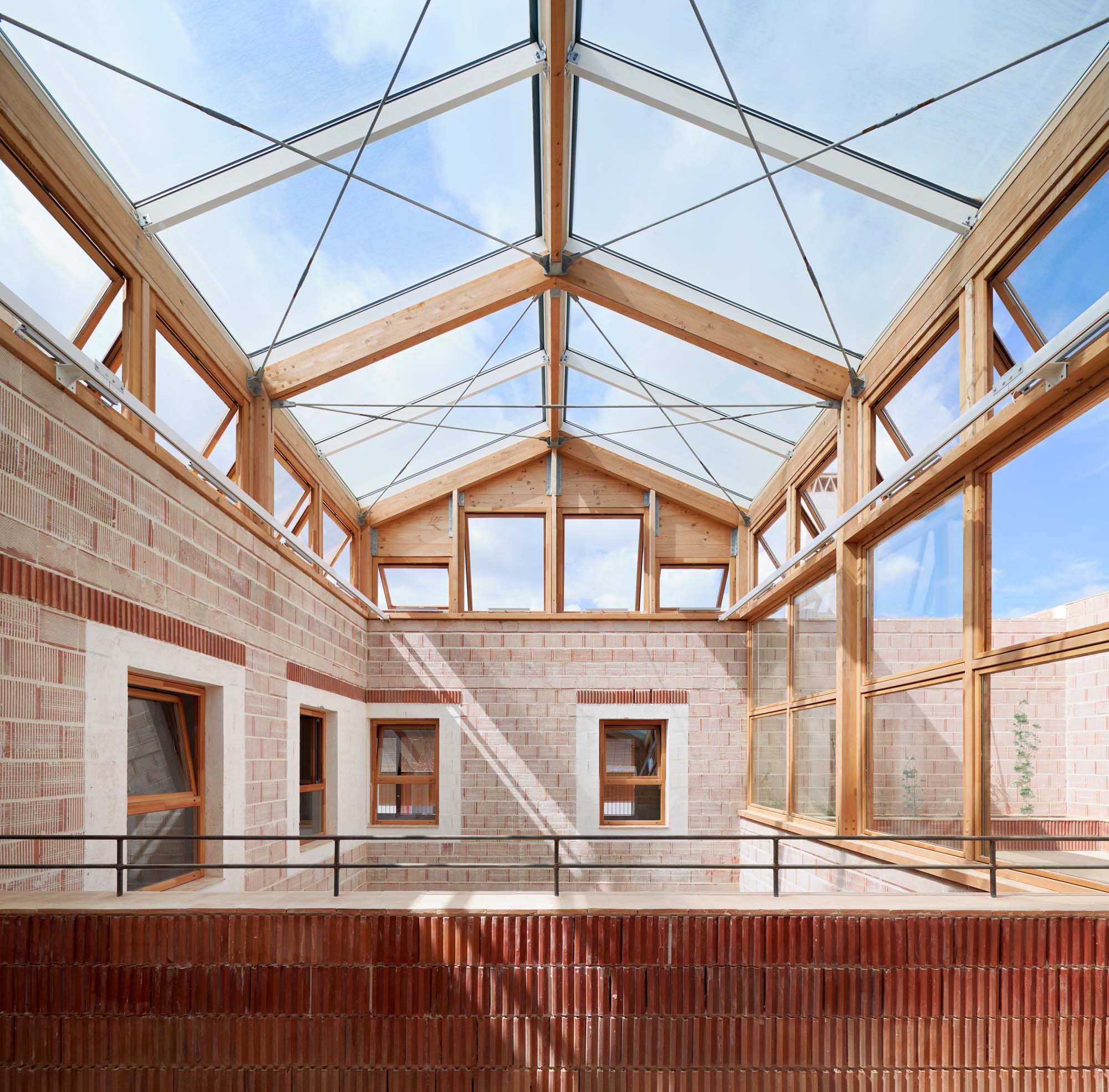
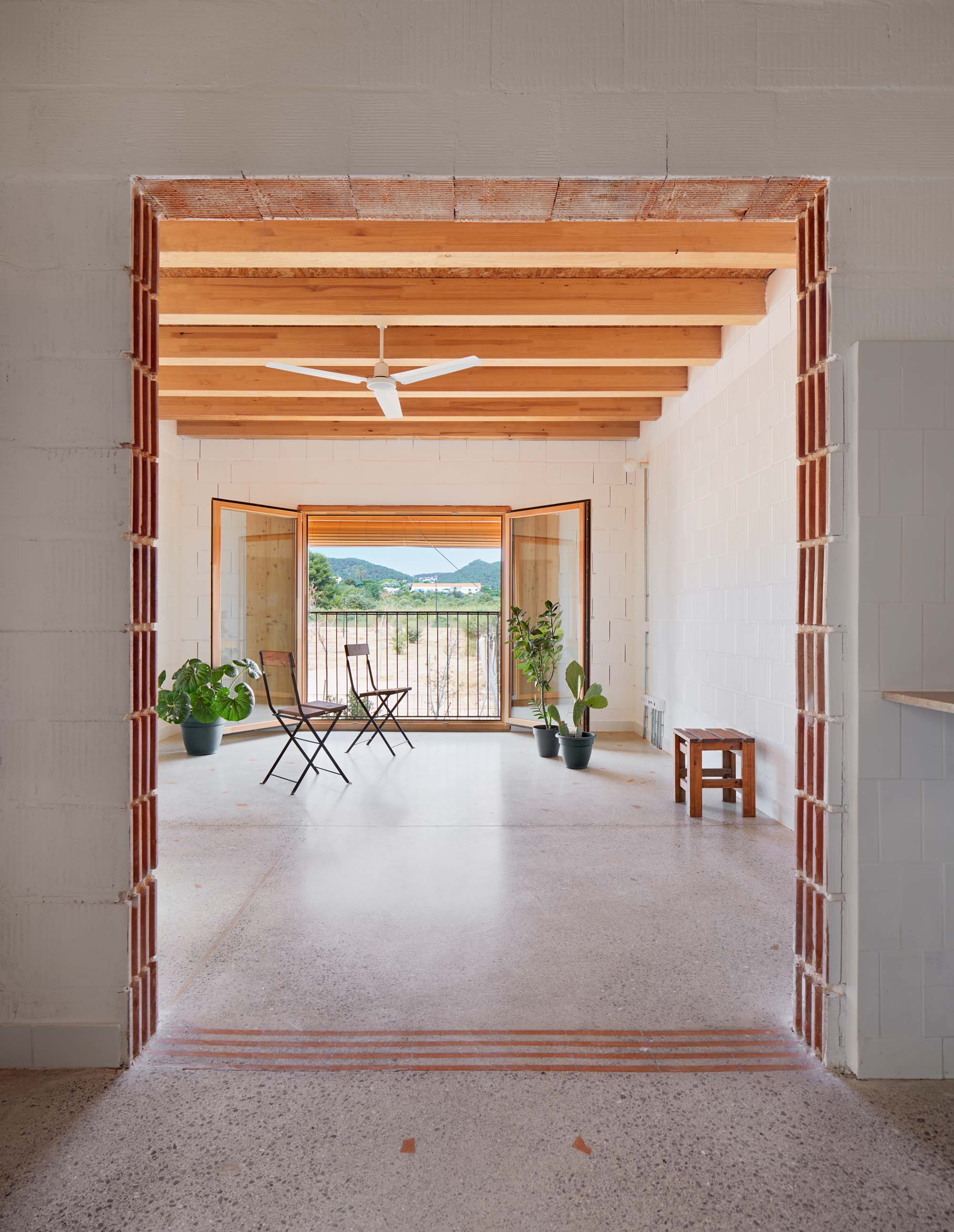
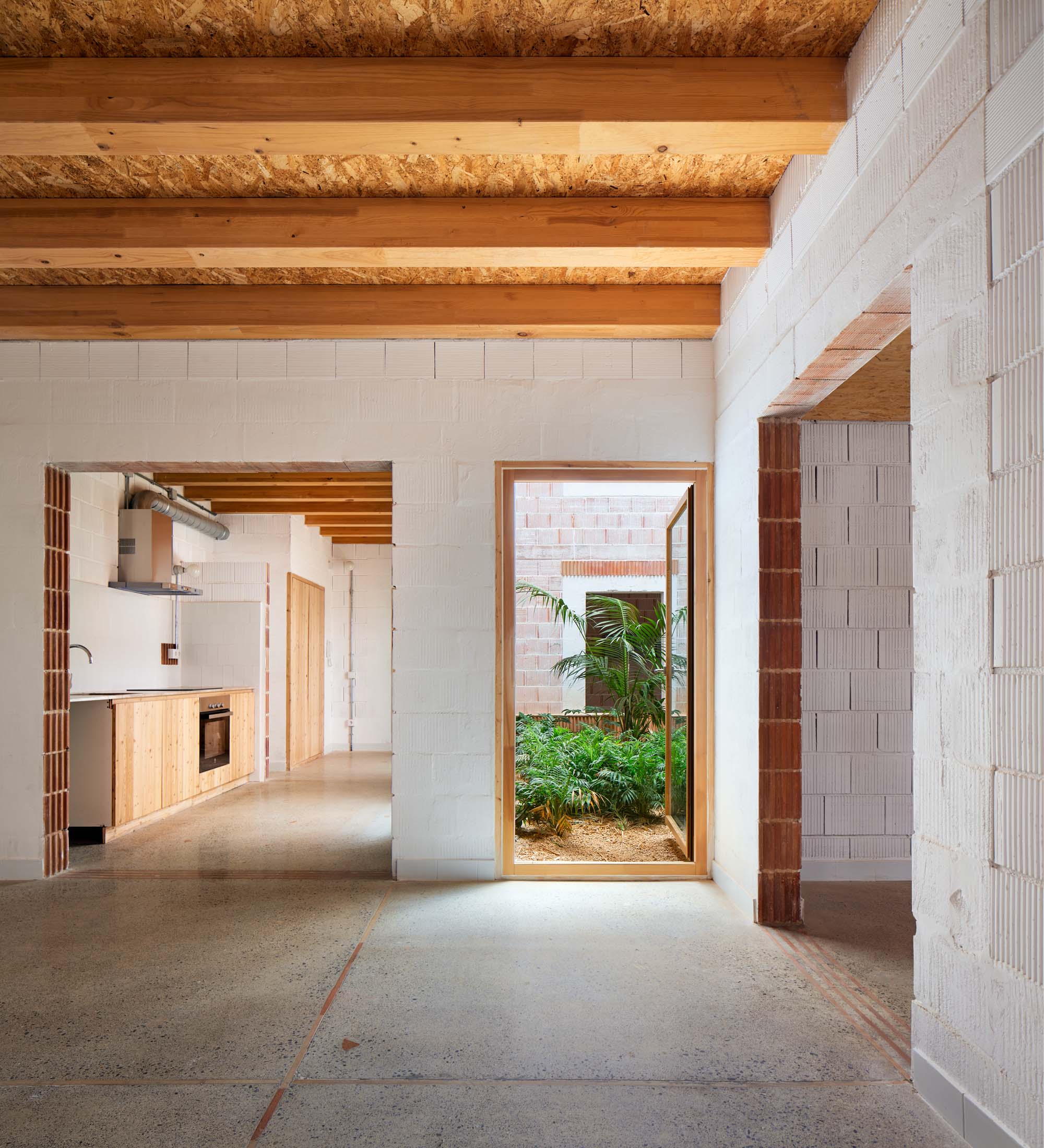
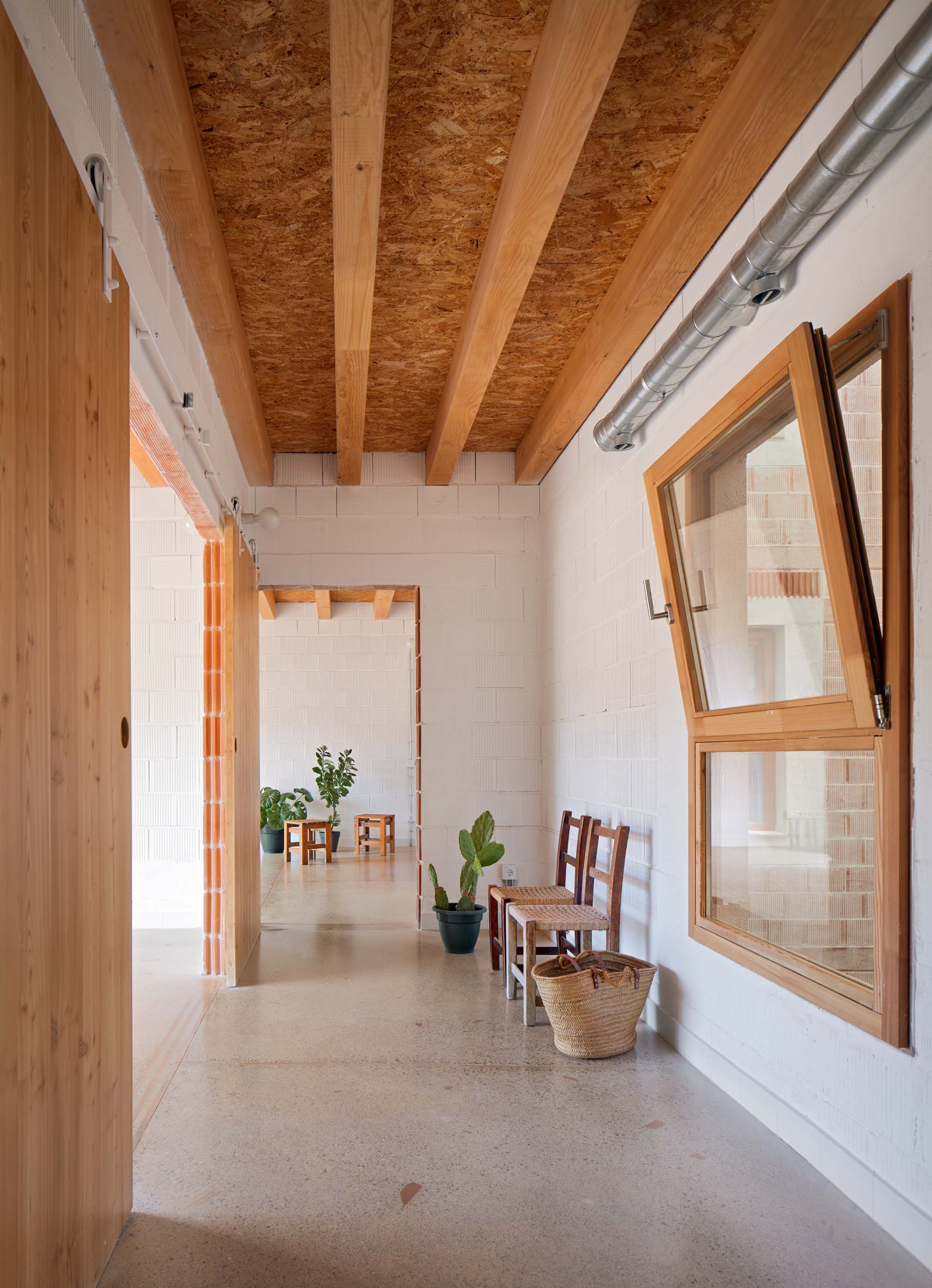
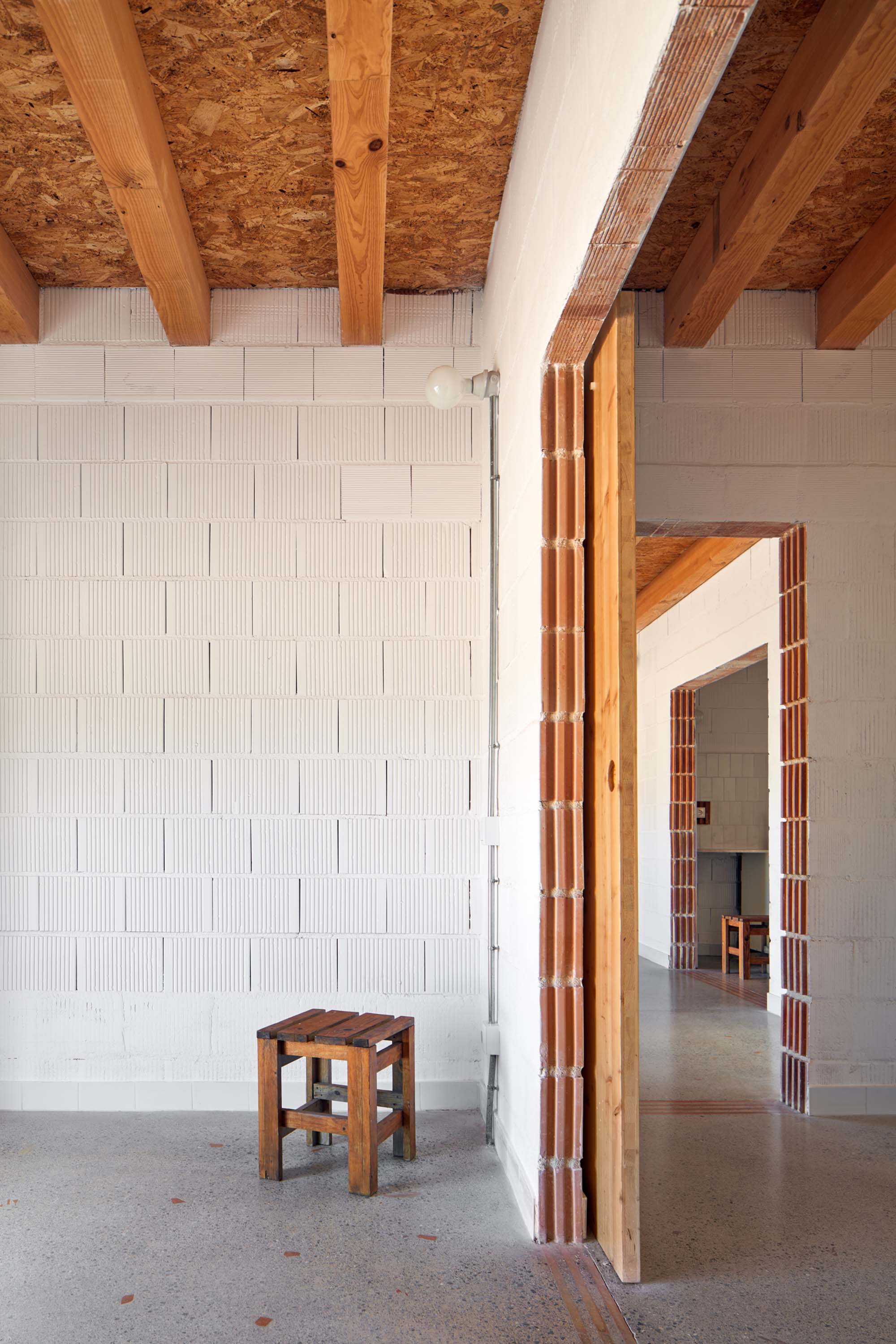


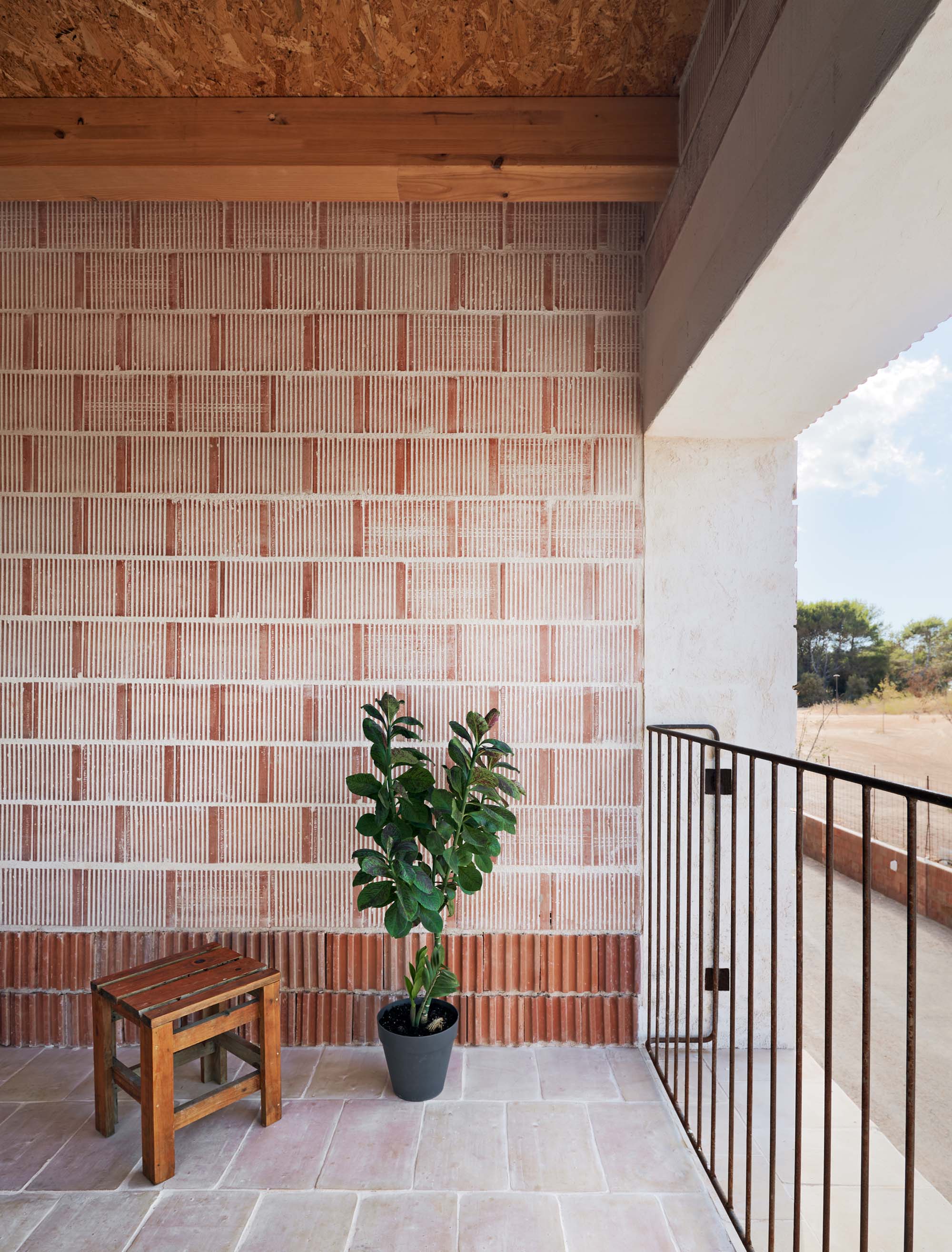
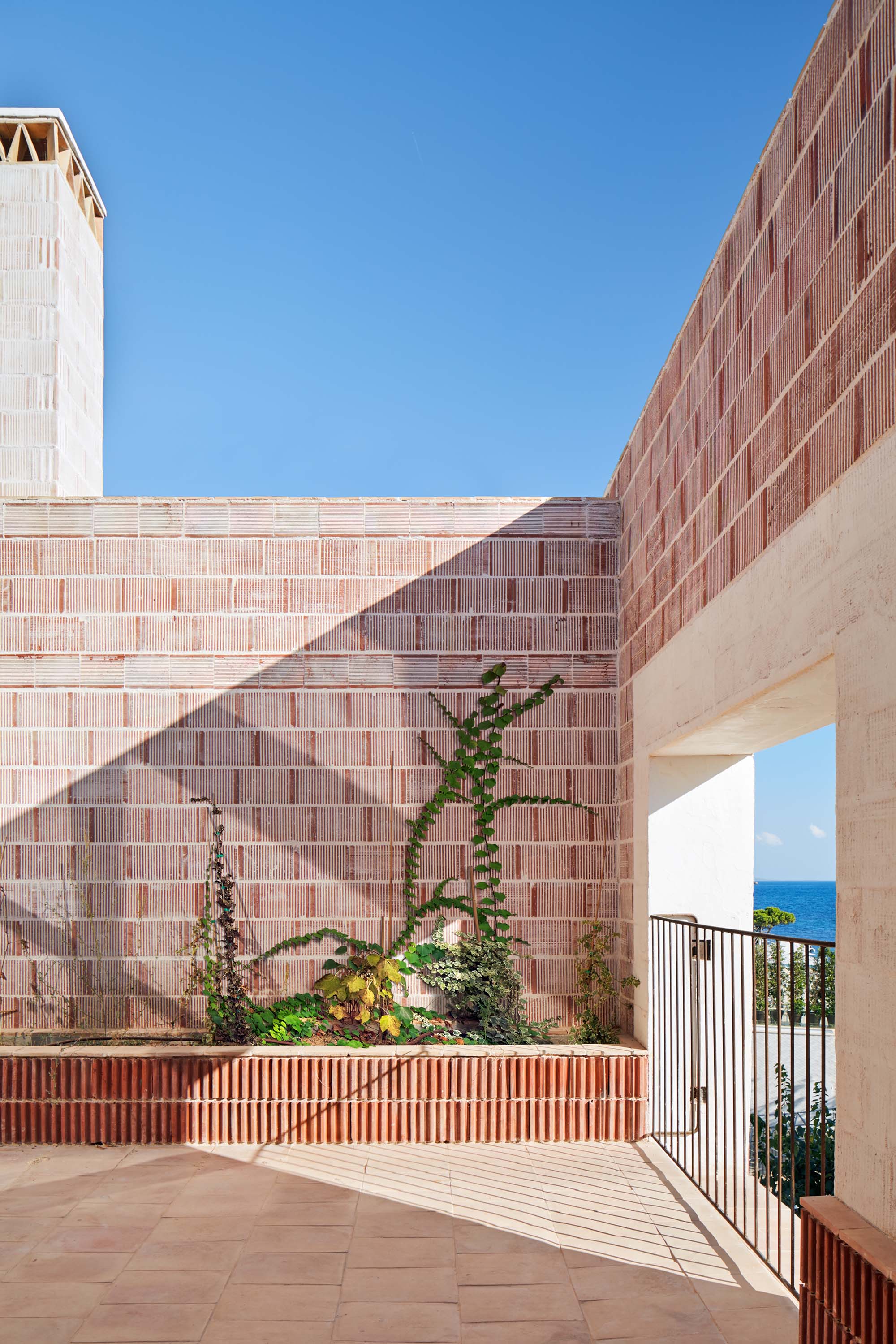
The project fulfills many sustainability and energy efficiency indicators, significantly improving on the values set by current regulations.
Firstly, by limiting to 438.91 kgCO2/m2 the CO2 emissions generated by the materials and techniques used for the building construction, a reduction of approximately 30% over the ones generated with conventional methods. This remarkable improvement was made possible by using ceramics manufactured in kilns with biomass; wood for the beams, the structure of the atriums, and carpentry; recycled cotton for the facade insulation; and dried posidonia for the roof insulation, rescuing an ancestral tradition of local architecture in doing so.
Secondly, by implementing passive design strategies that reduce non-renewable primary energy consumption to 10.7 KW/m2/year. These strategies include: the definition of an envelope of high thermal inertia with thermo-clay walls filled with earth from the excavation; the cross ventilation of all the rooms; the thermal regulation of the interior of the houses through the covering of the patios with a system of glazed enclosures and practicable solar protections that turn them into bioclimatic atriums, that is, into heat accumulators in winter and ventilated shaded areas in summer. In addition, these architectural strategies make it possible to achieve comfortable conditions of humidity and temperature inside the dwellings without installing a centralized heating system, which means significant savings in energy bills for the families living in the building.
Finally, it is crucial to highlight the extensive use of greenery in the courtyards, urbanization, roofs and planters to mitigate the heat island effect and create more pleasant living conditions. Furthermore, carefully selected plant species with low water requirements and reusing rainwater collected from the roof (stored in an underground cistern in front of the building) for irrigation guarantees vegetation sustainability in Ibiza’s arid climate.


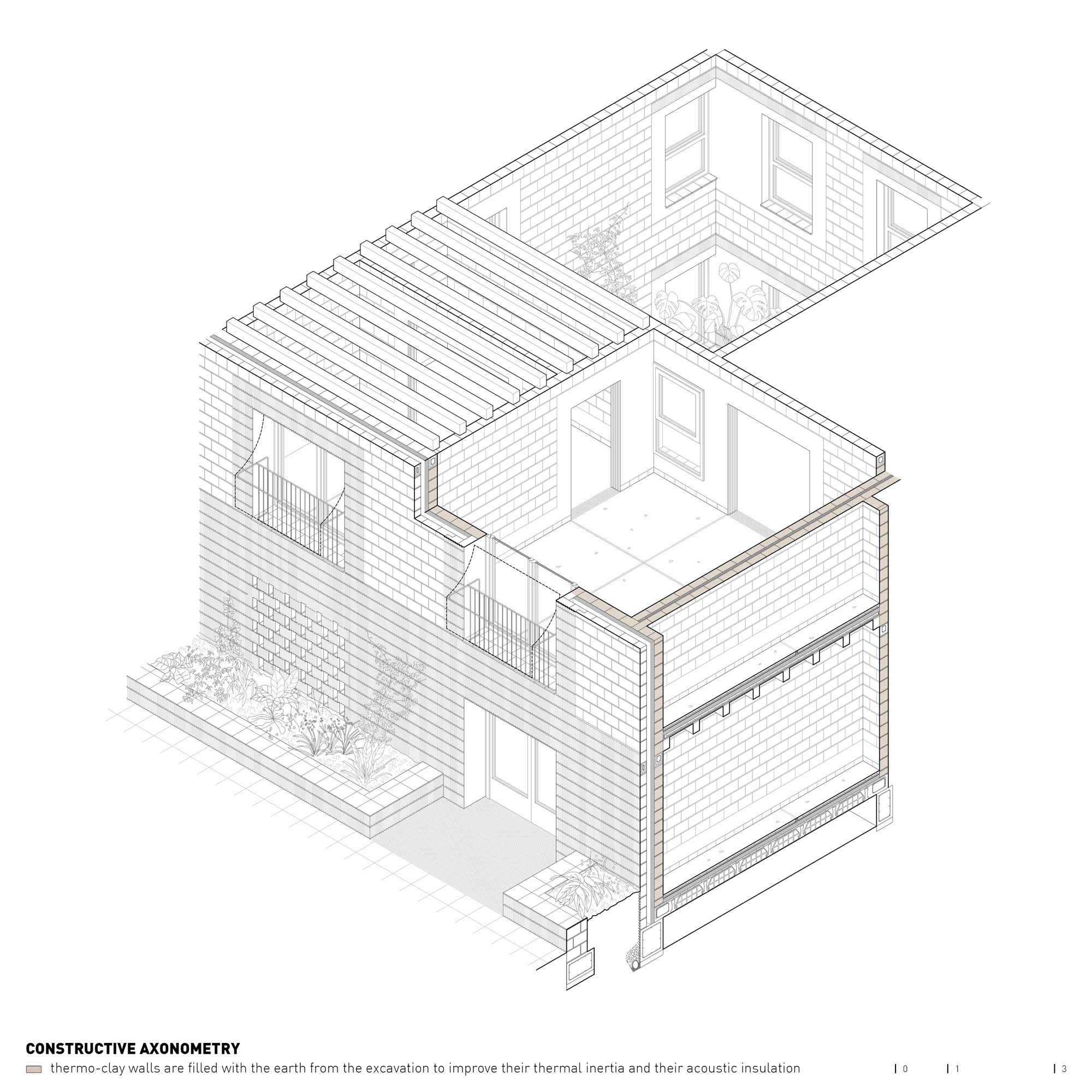

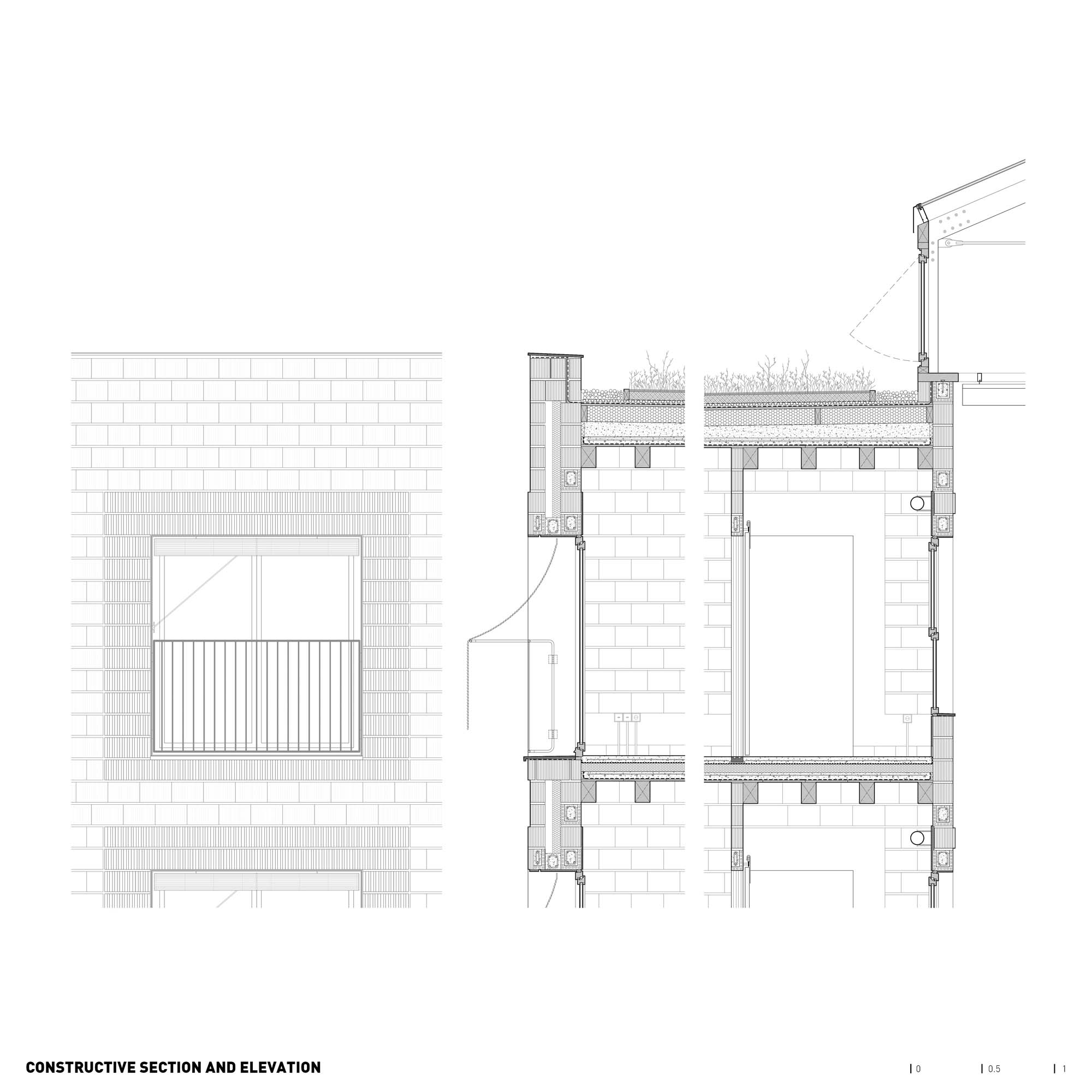
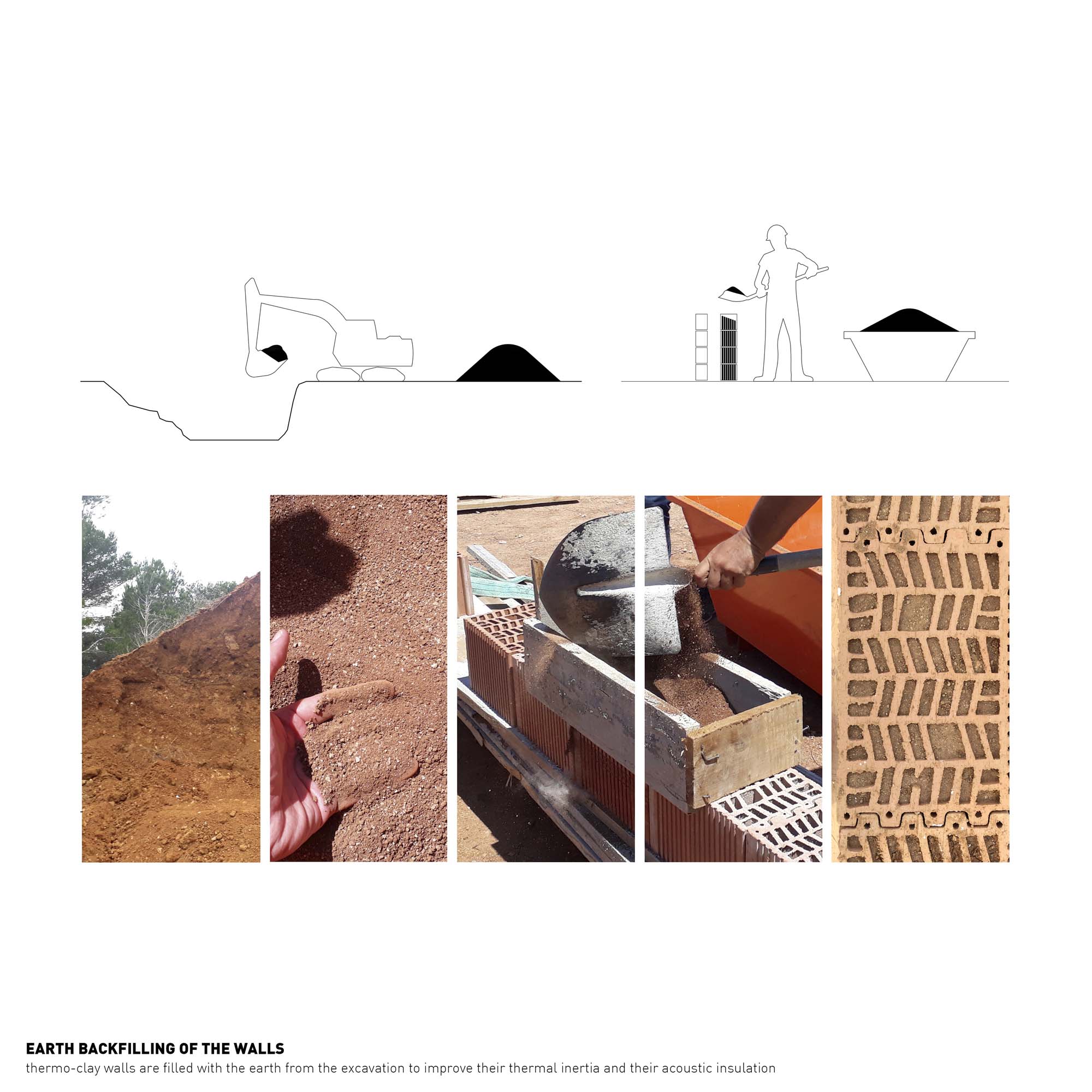
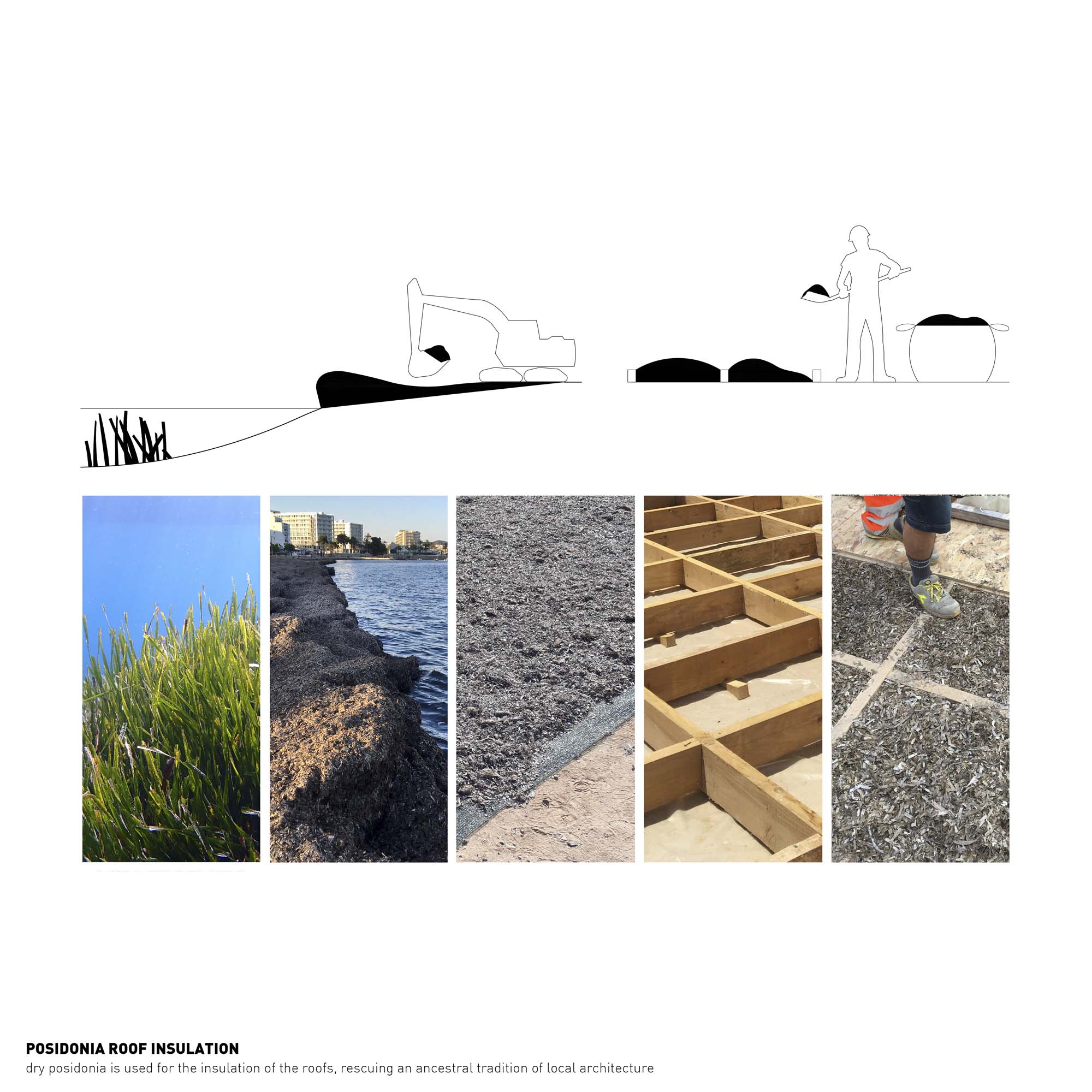
Other projects by 08014




